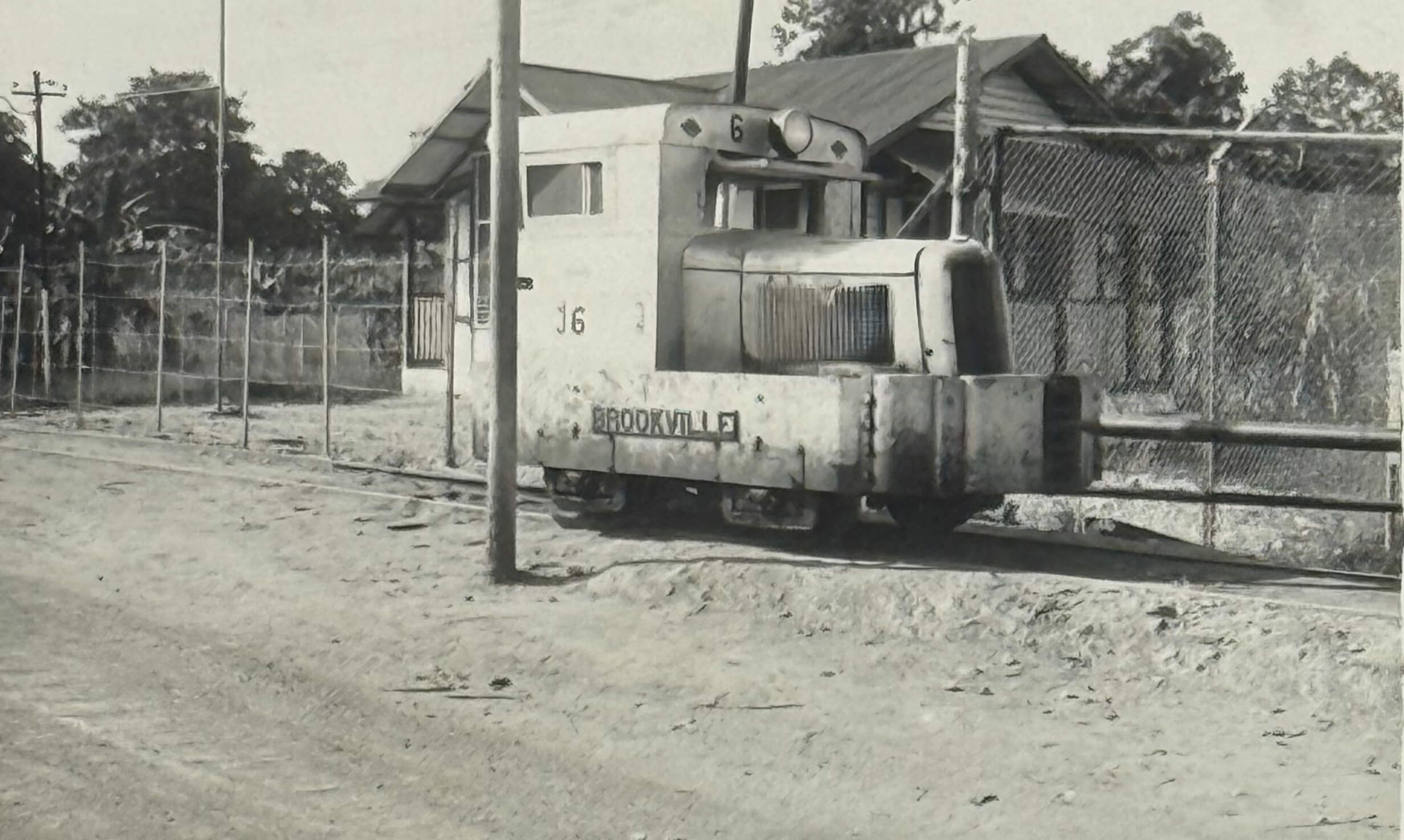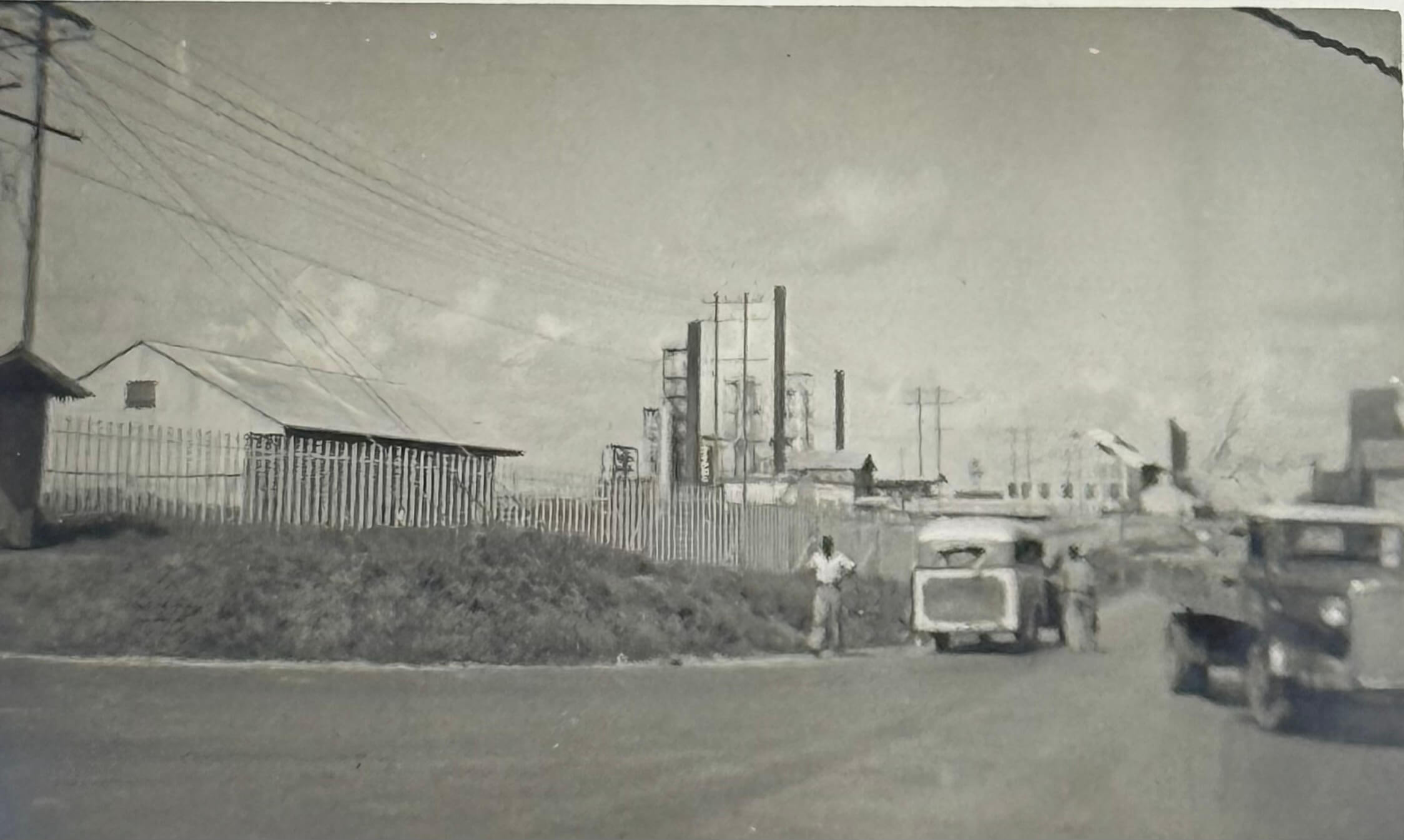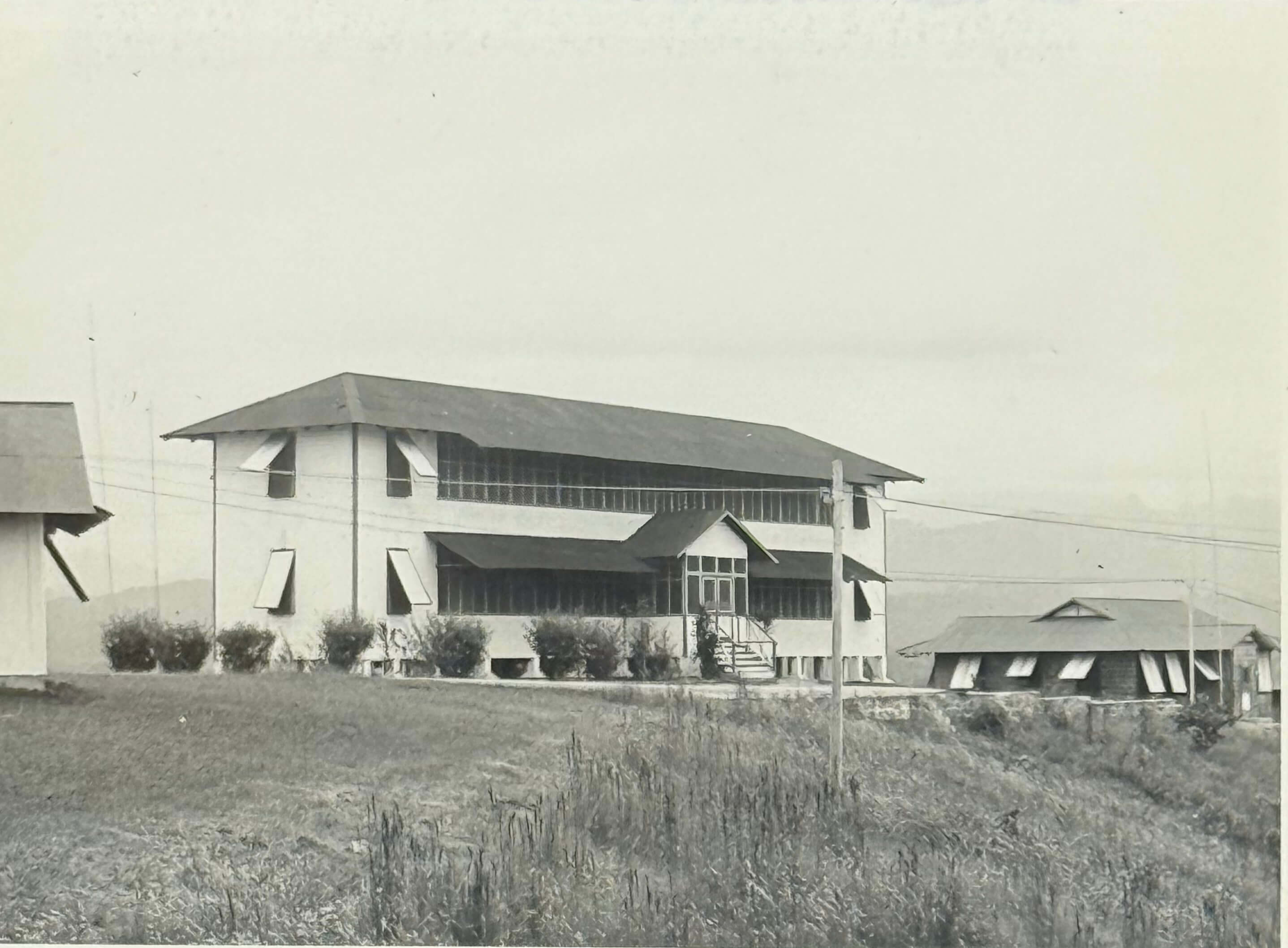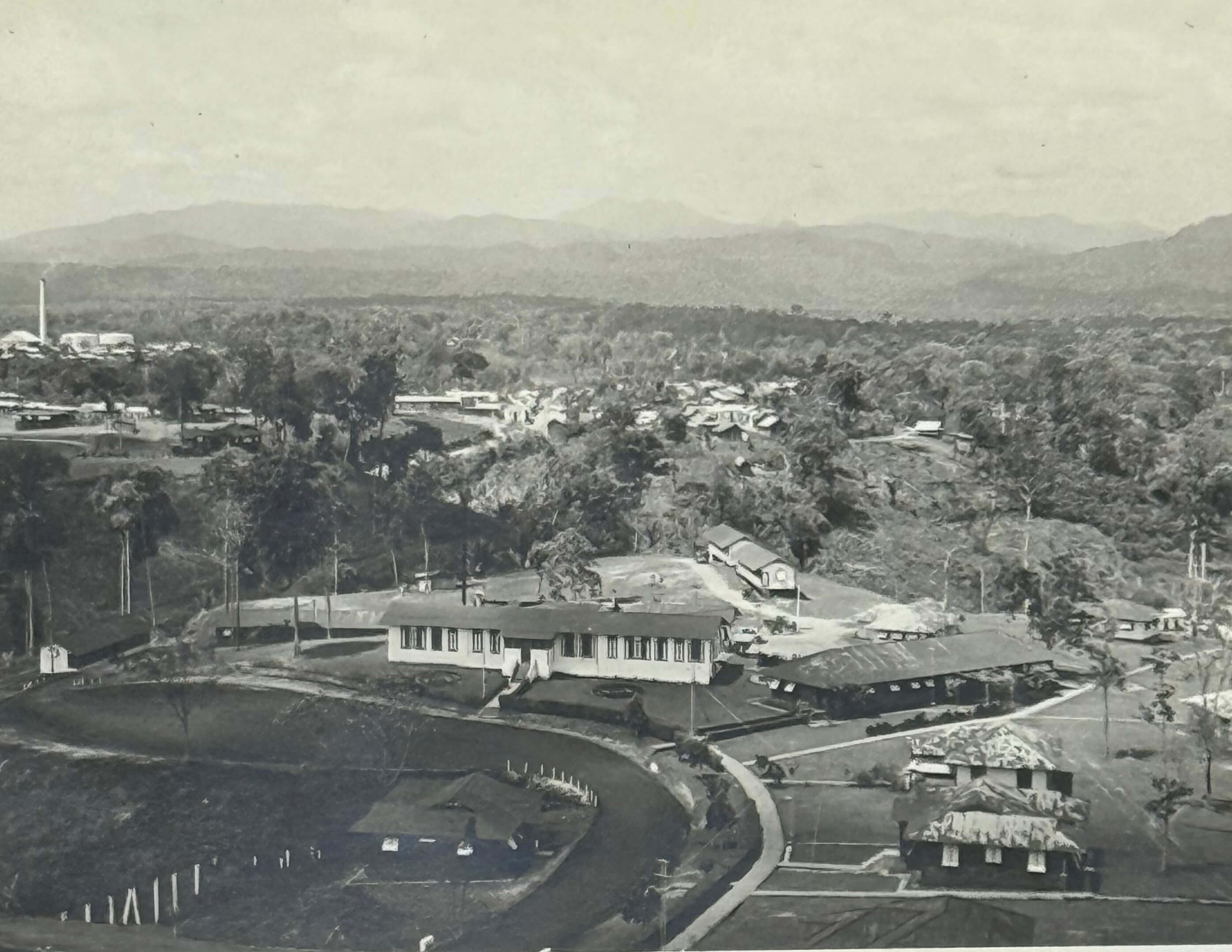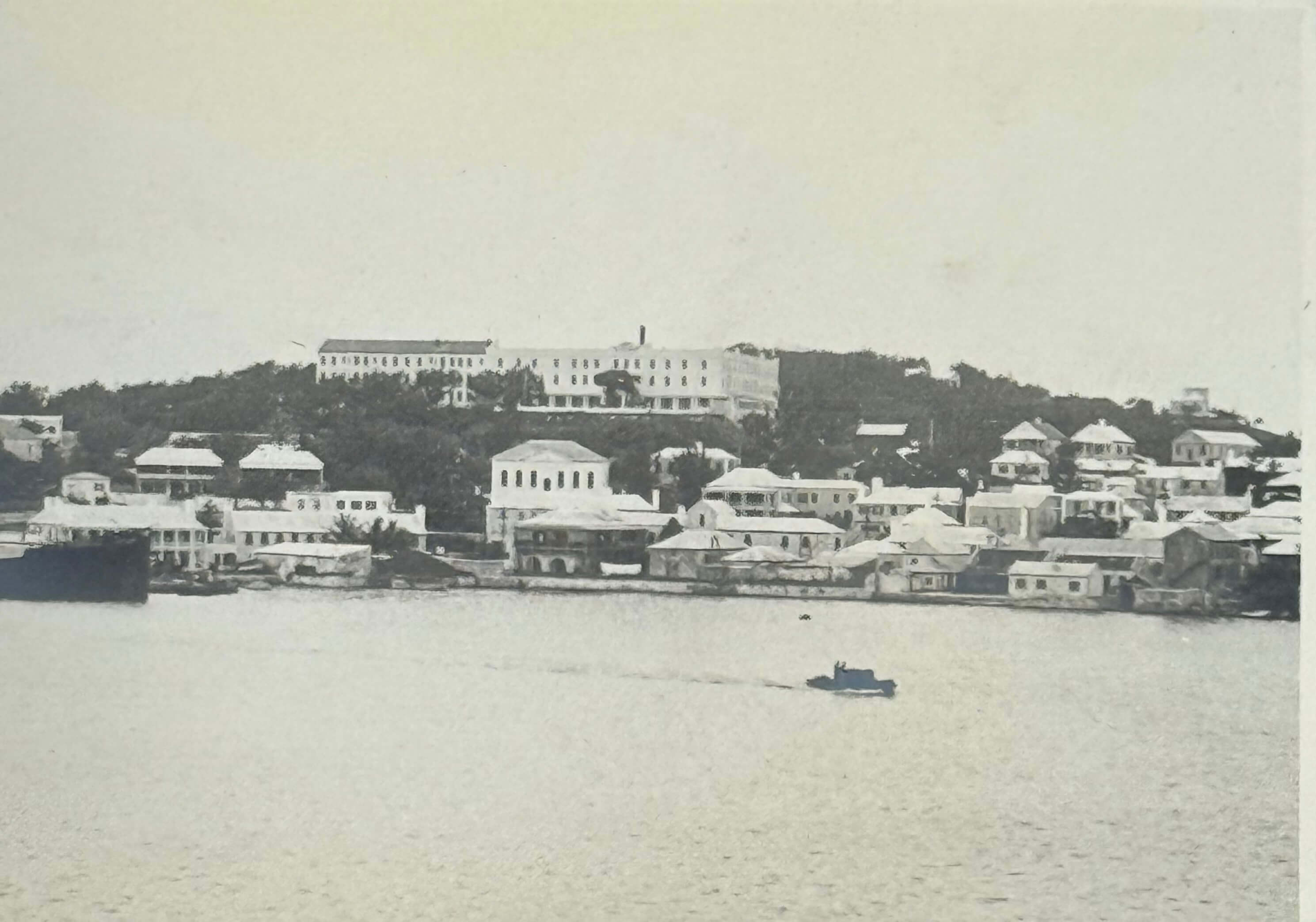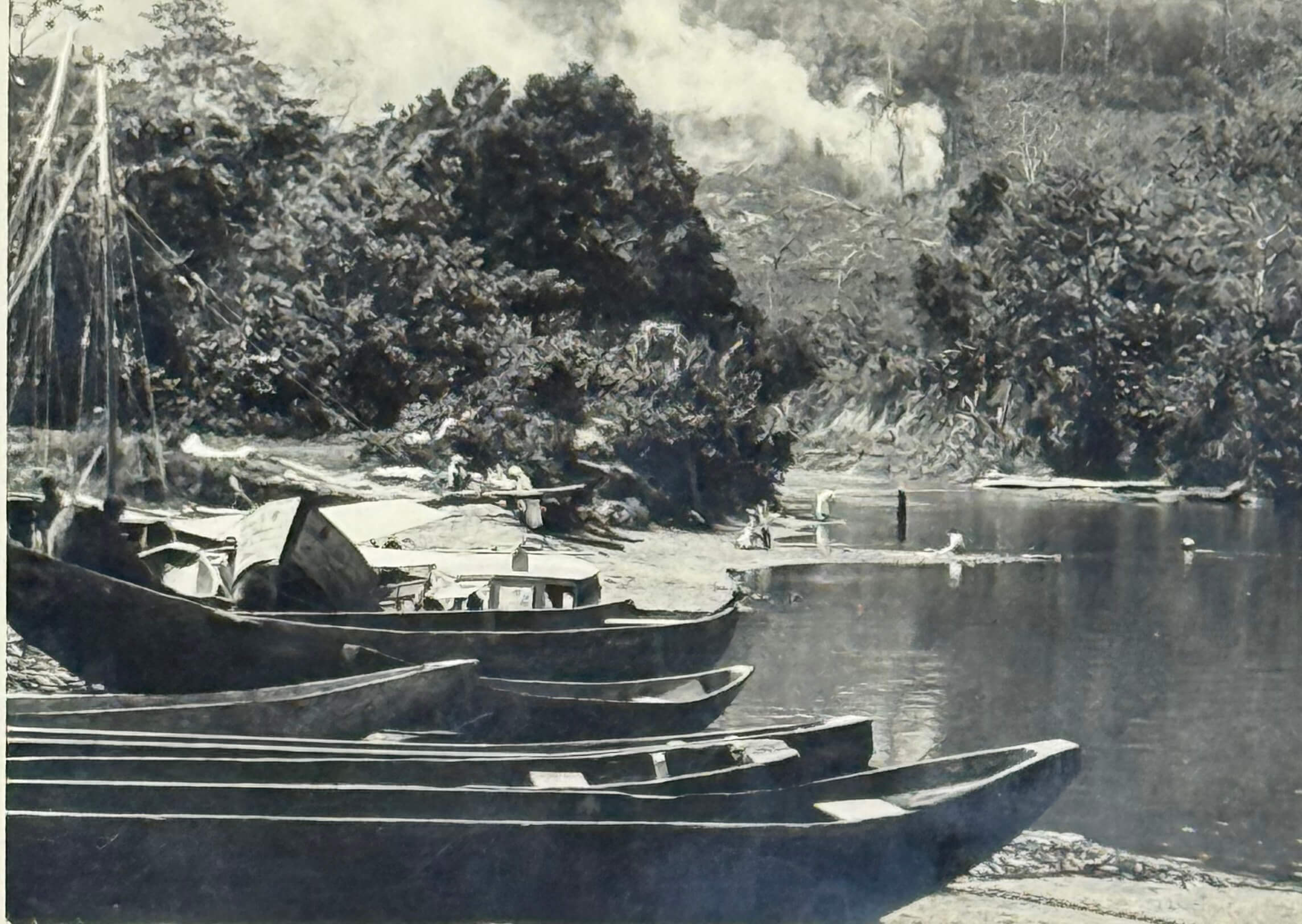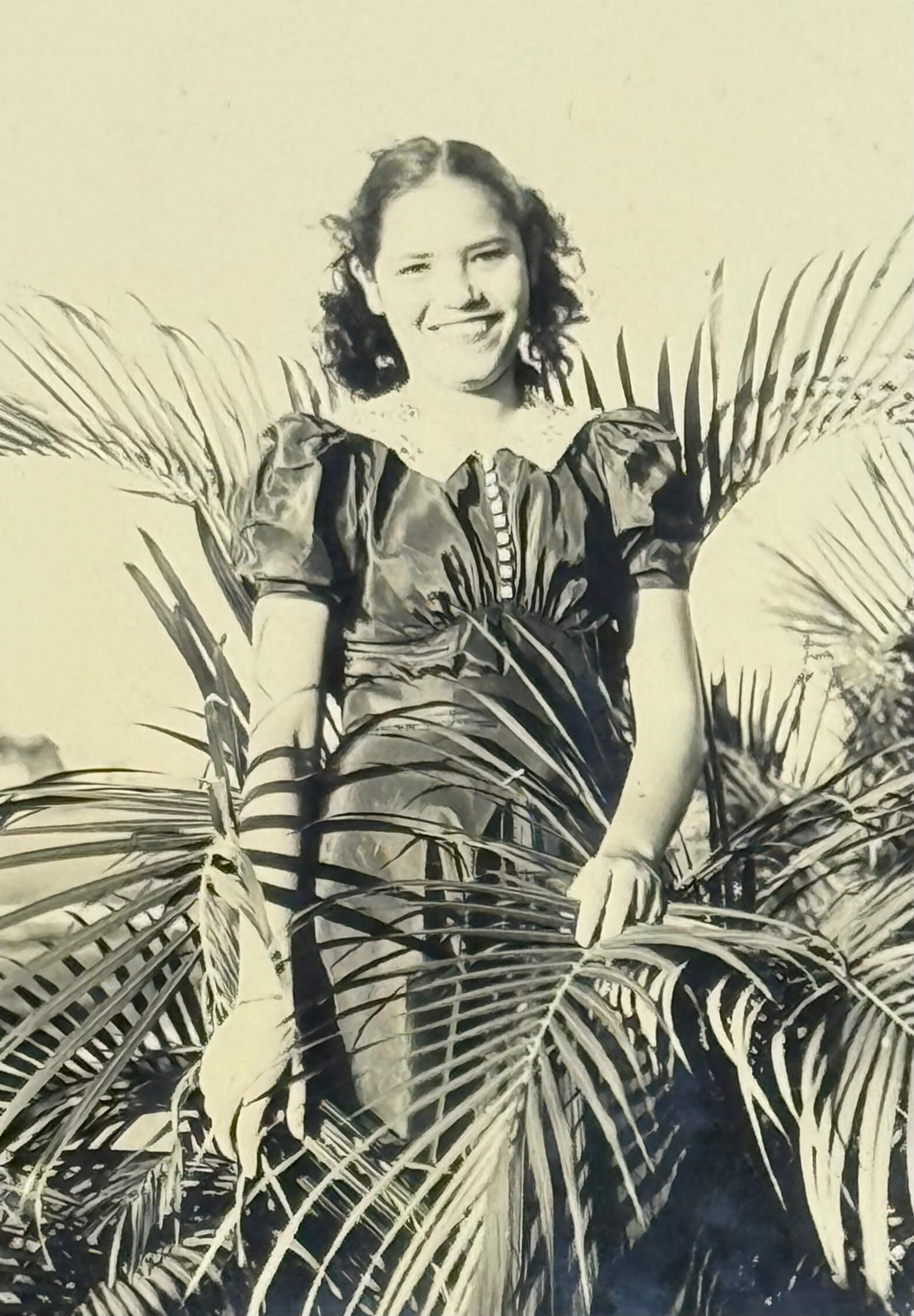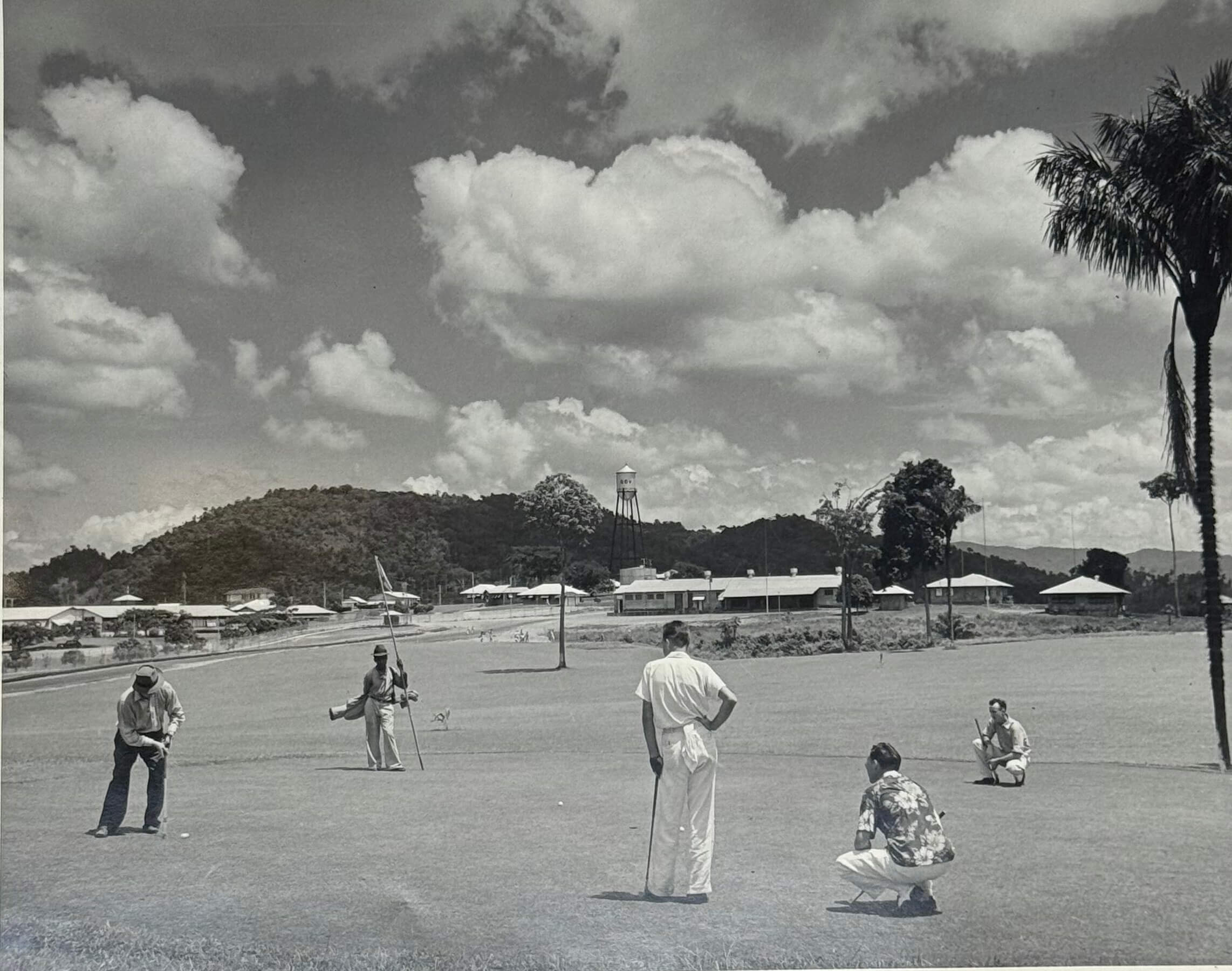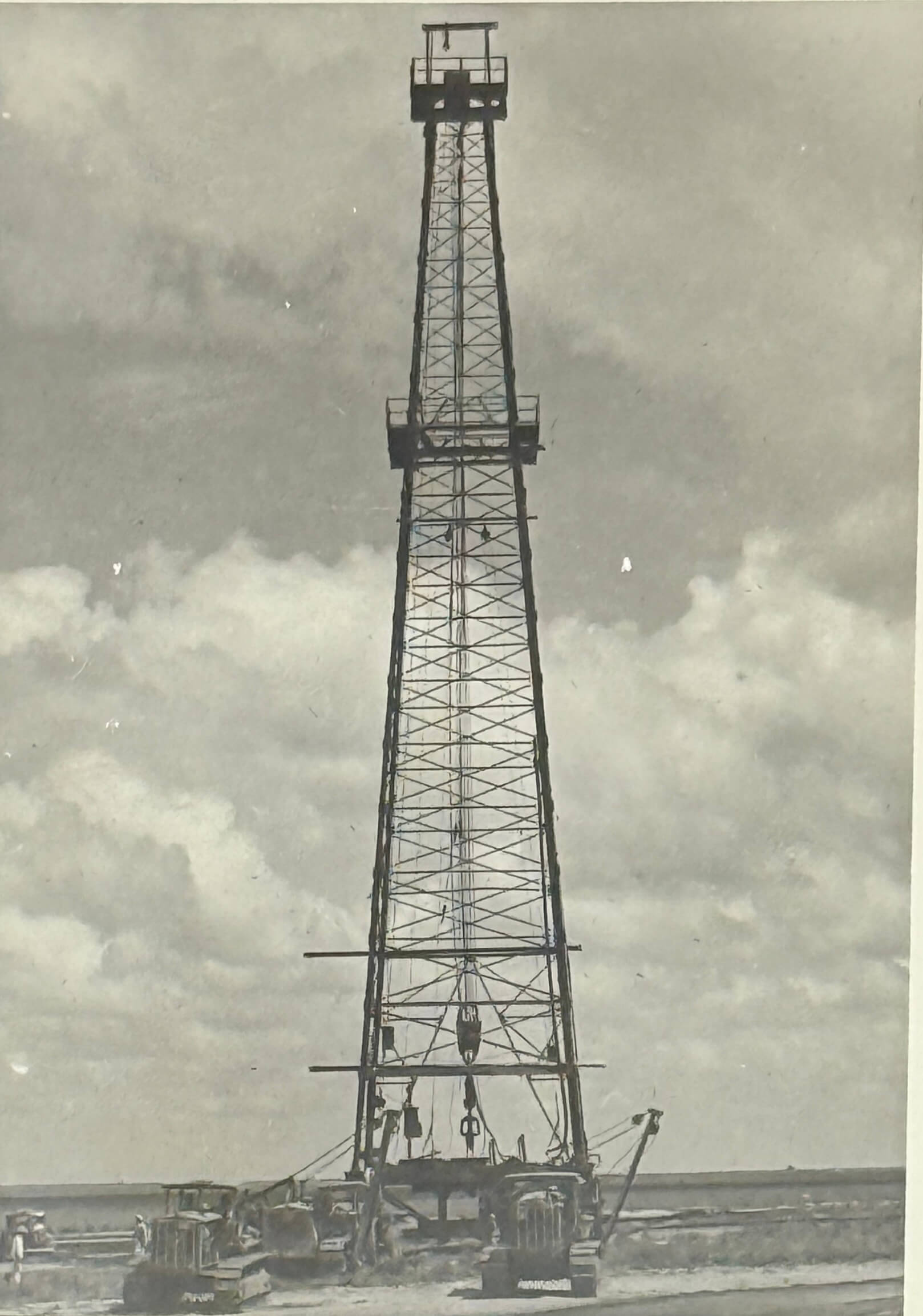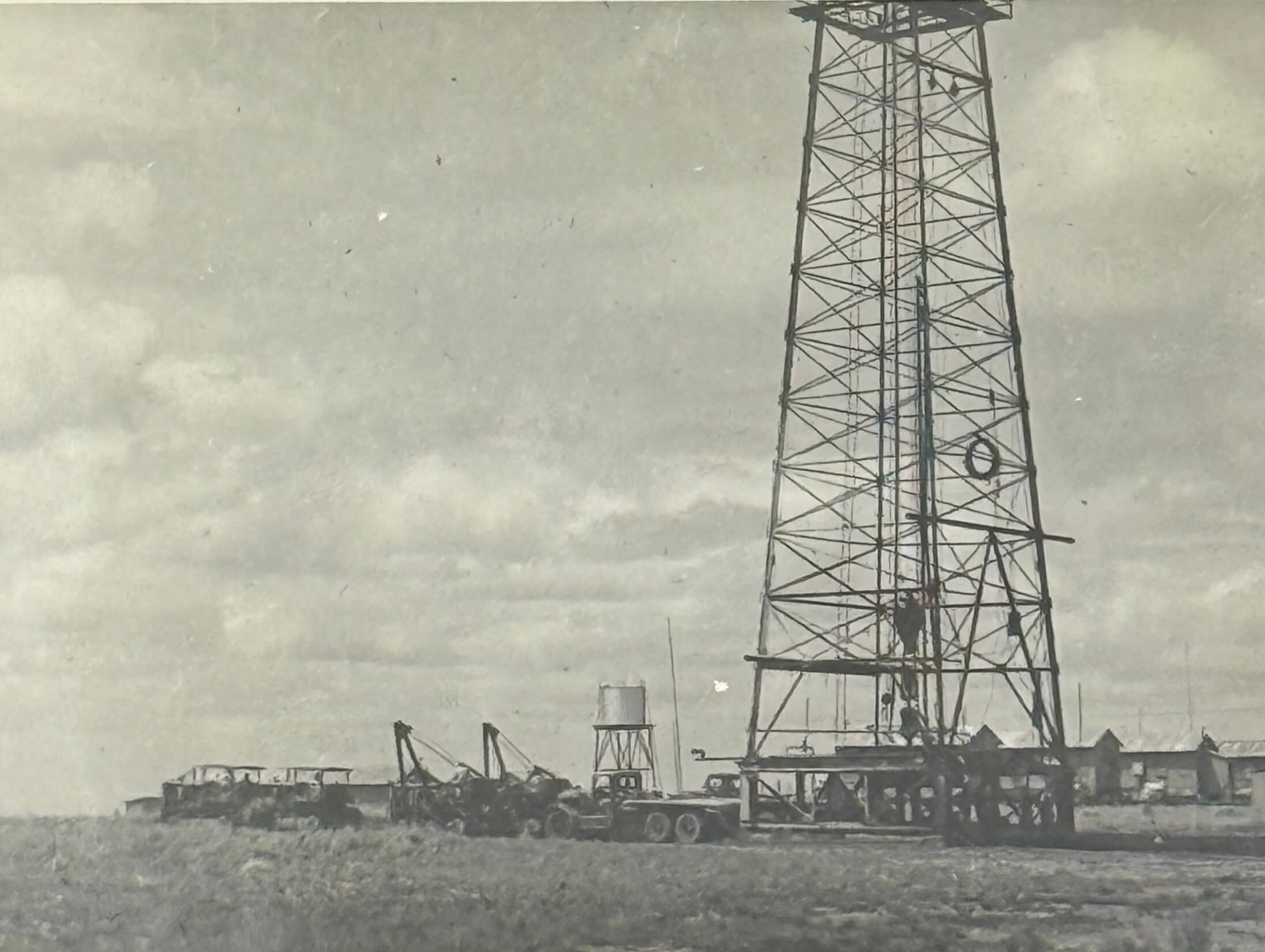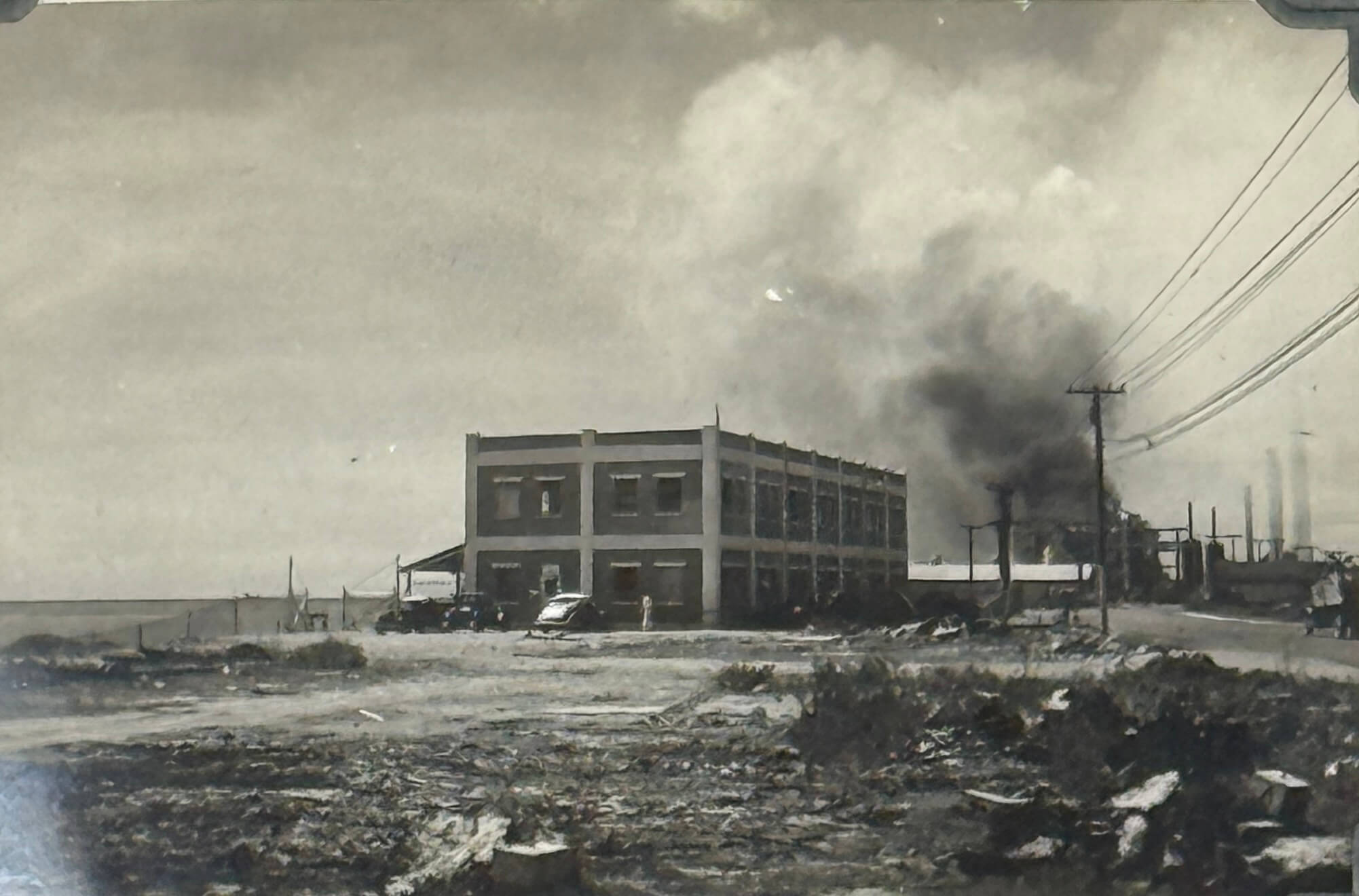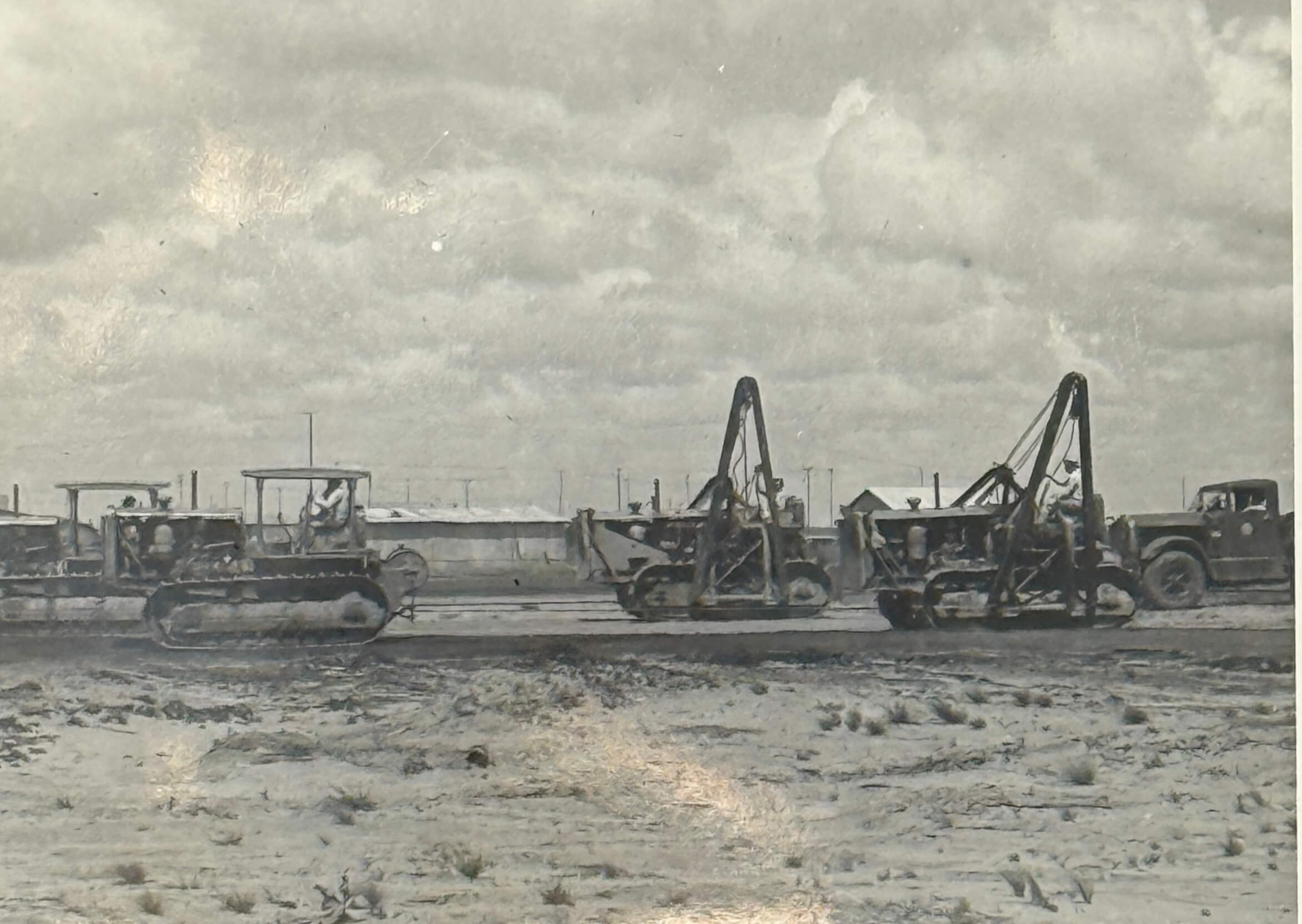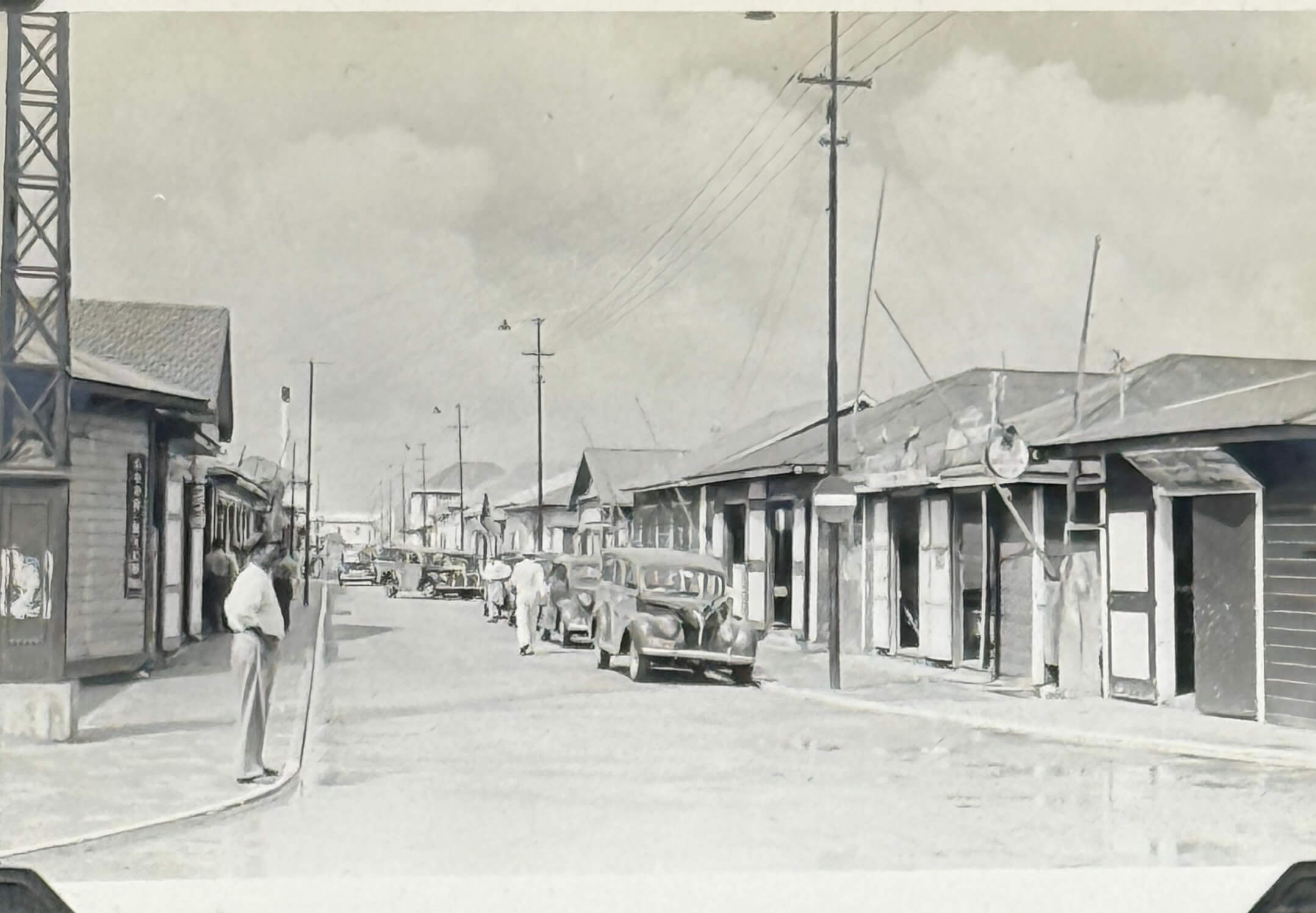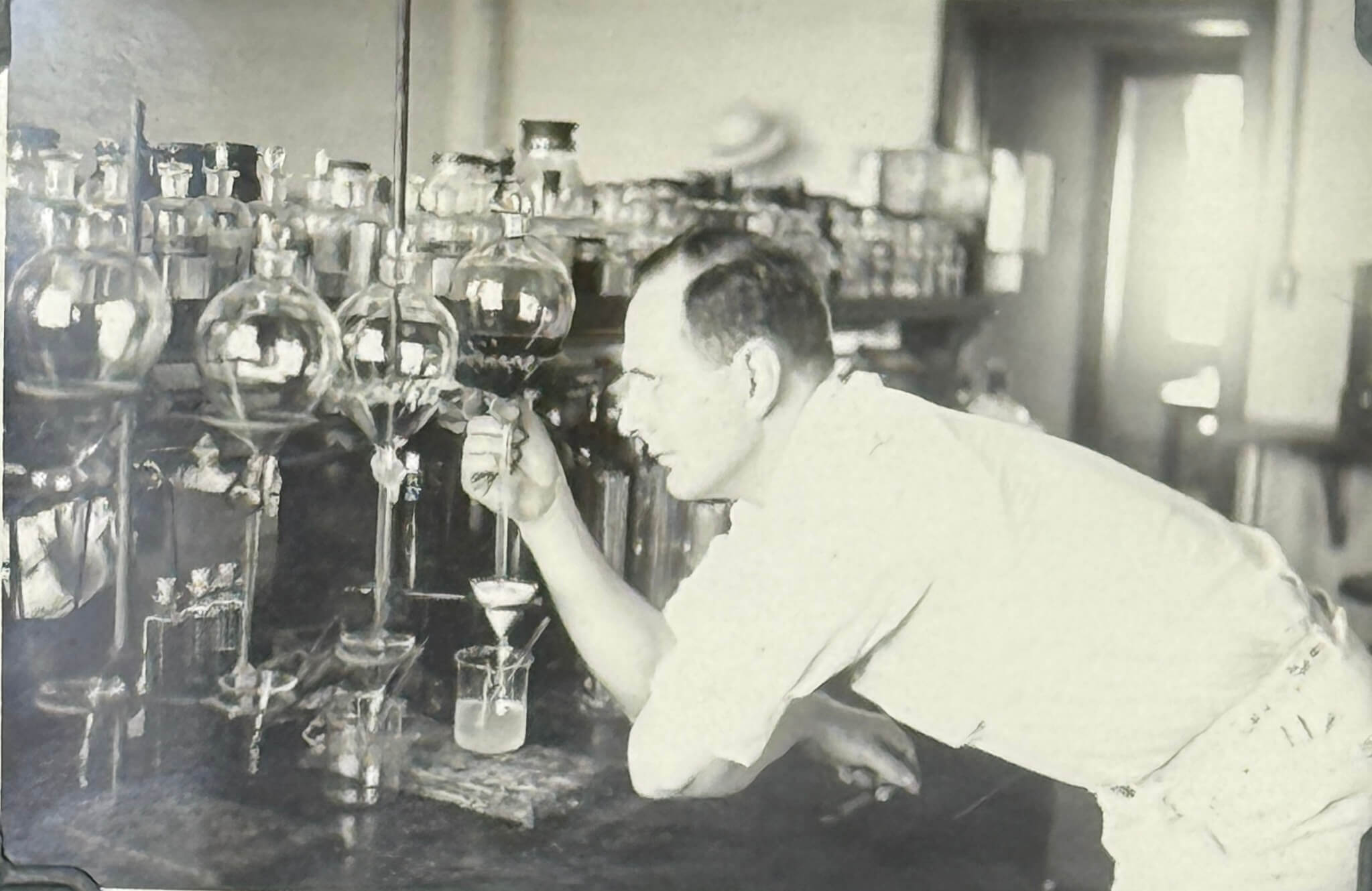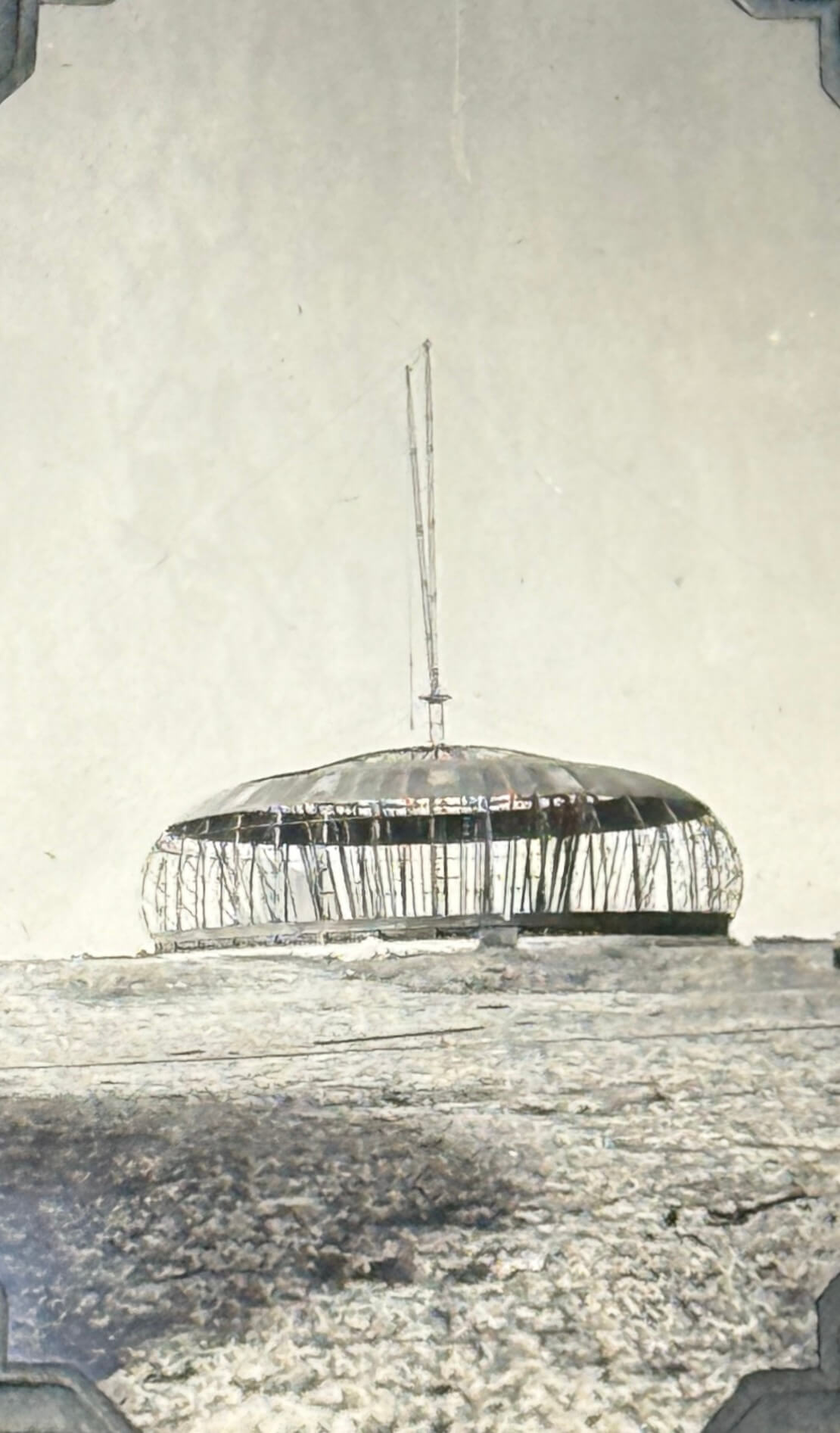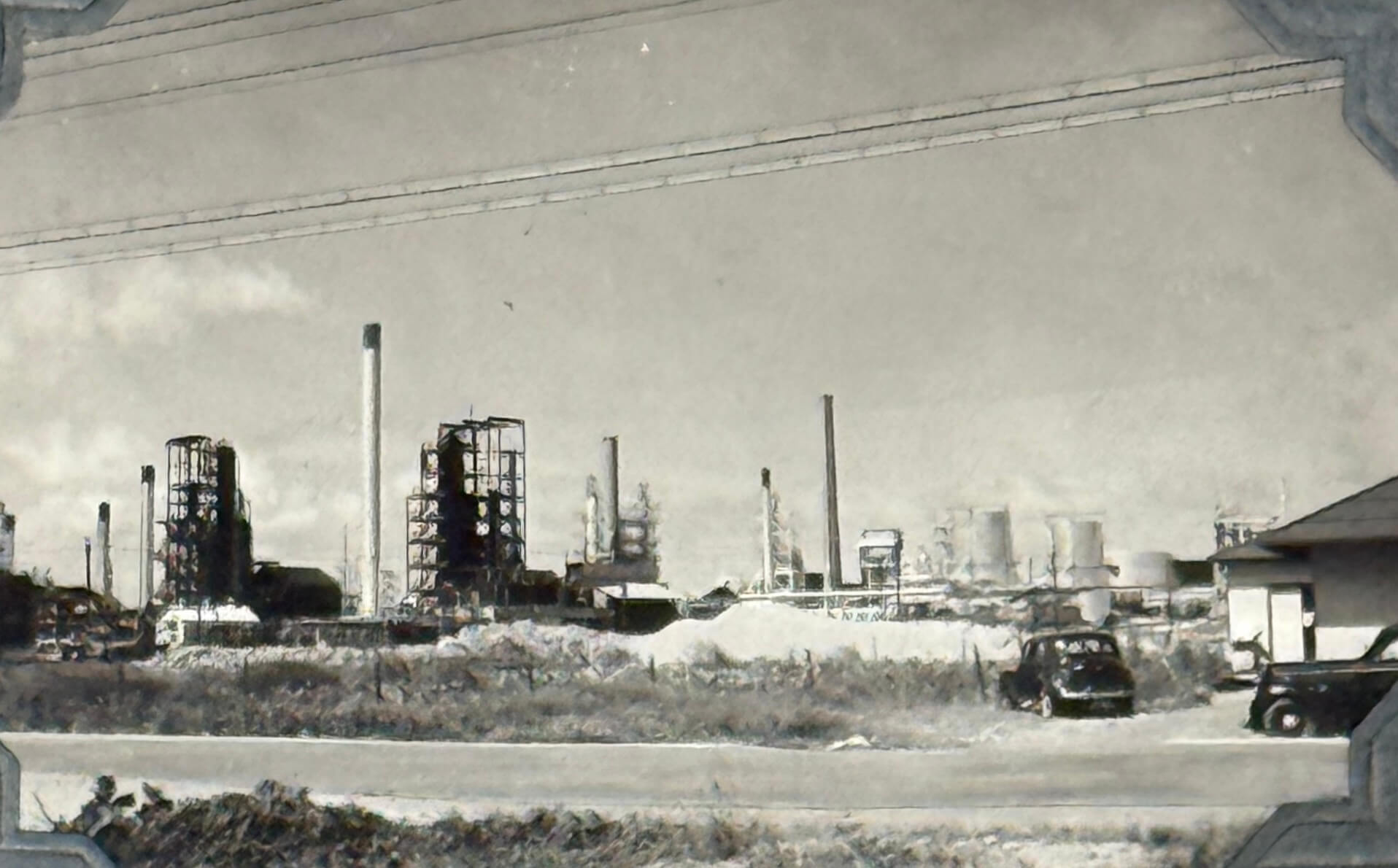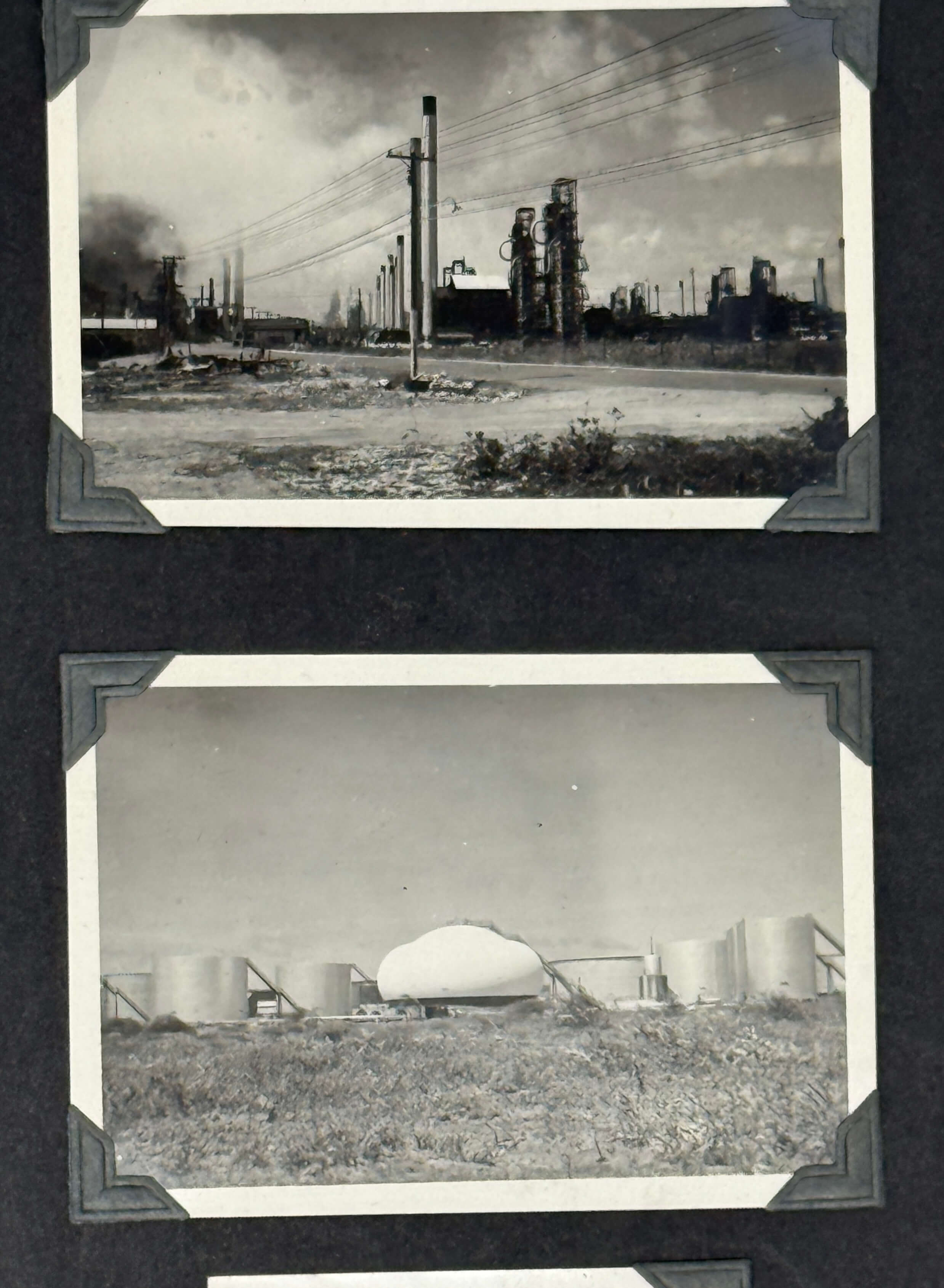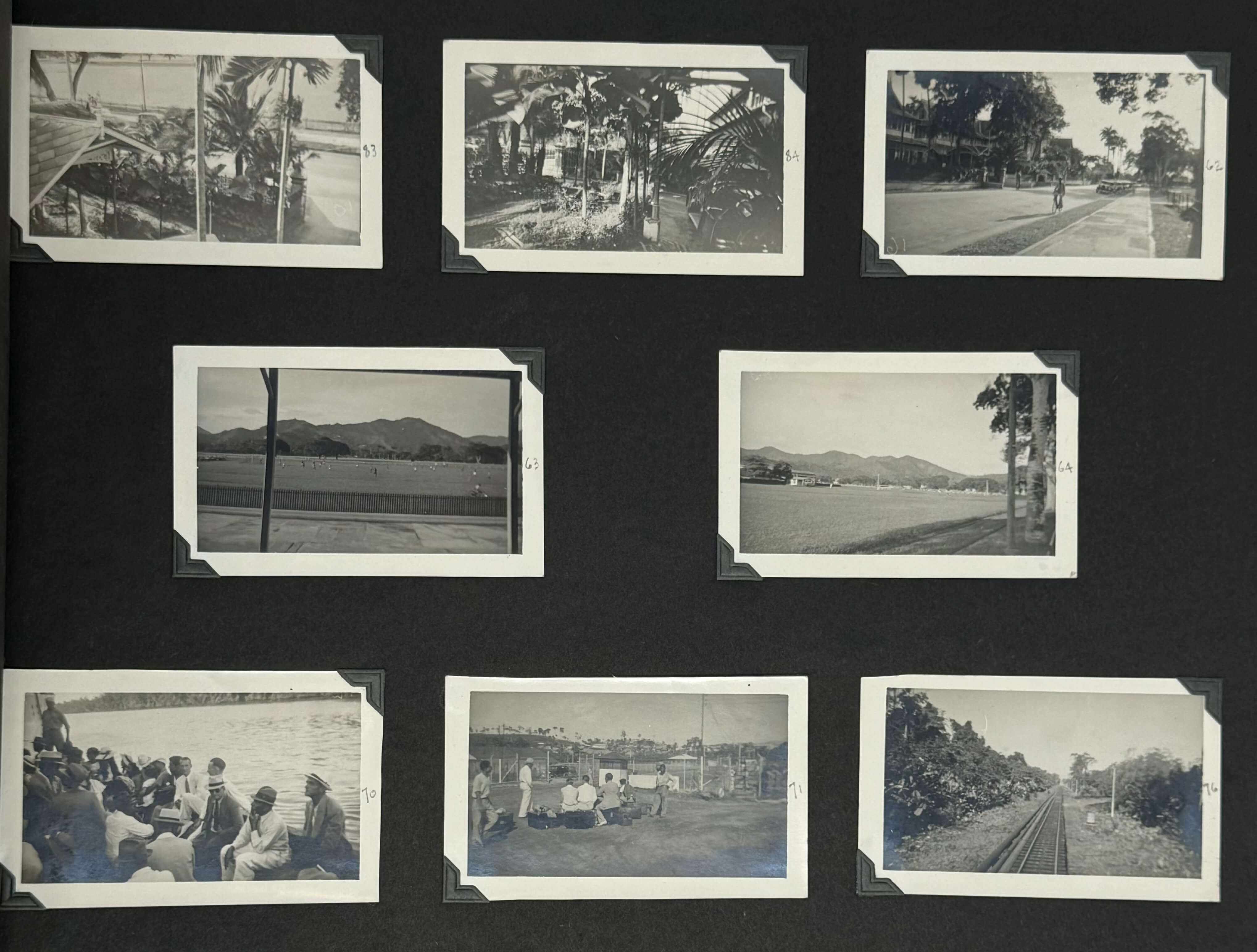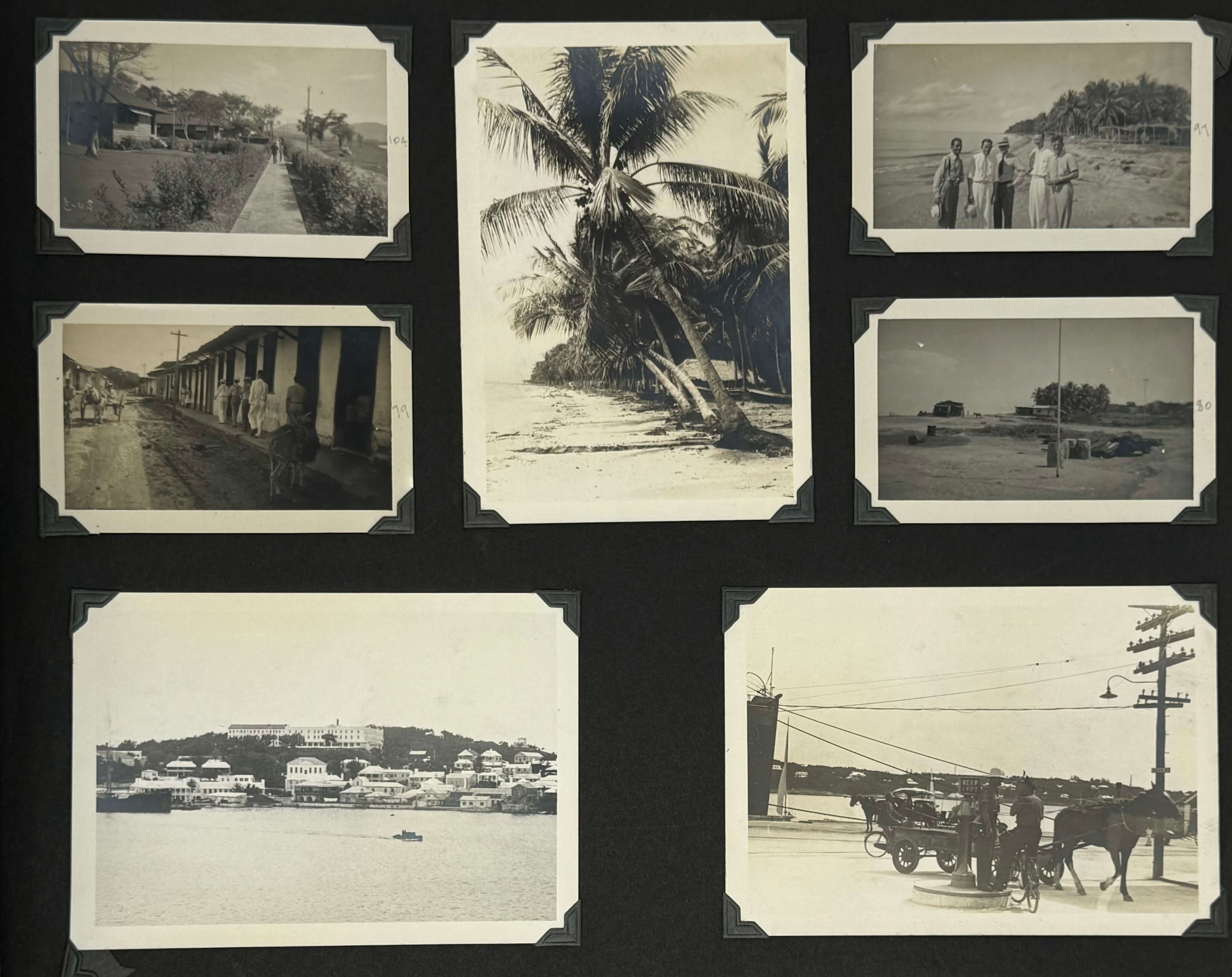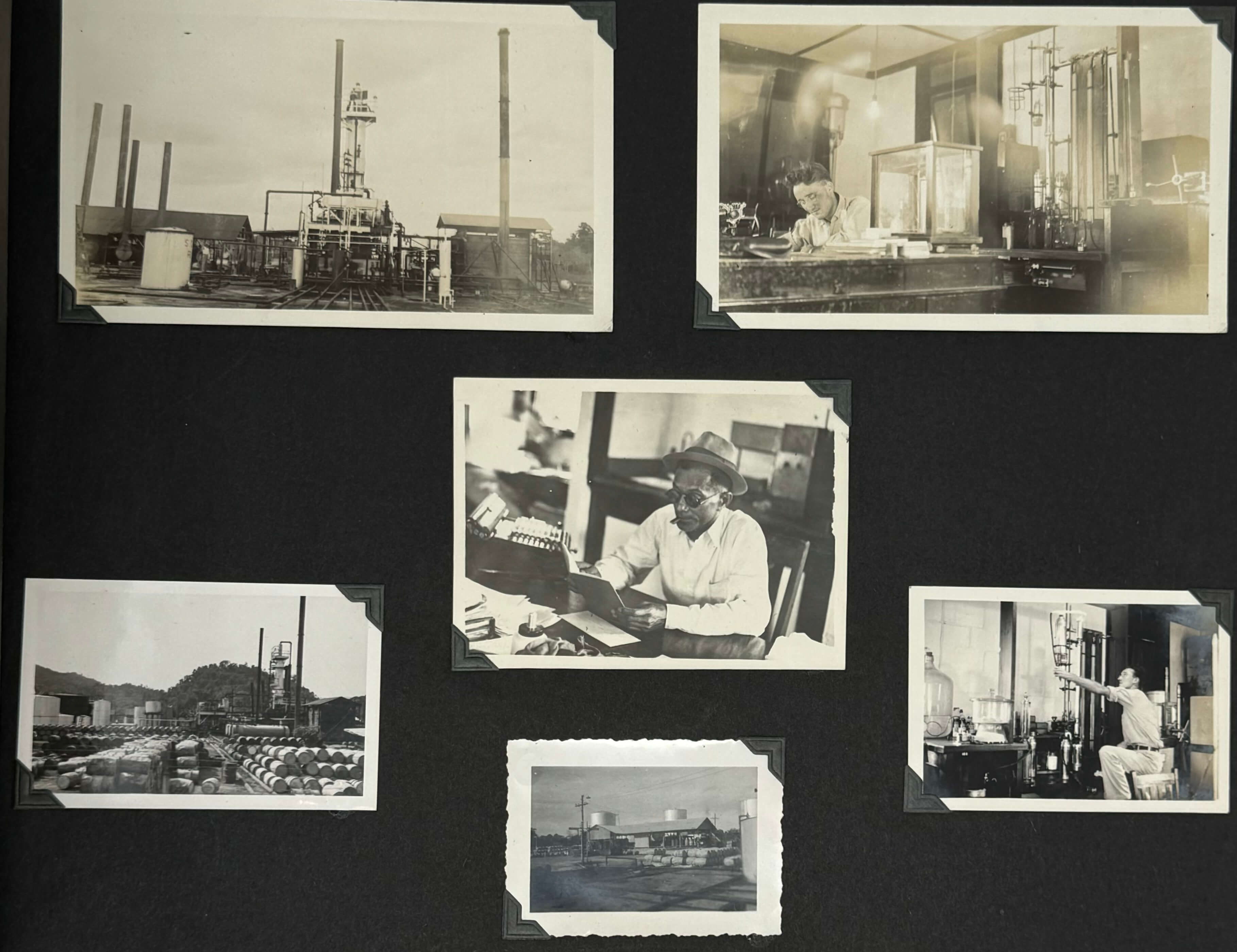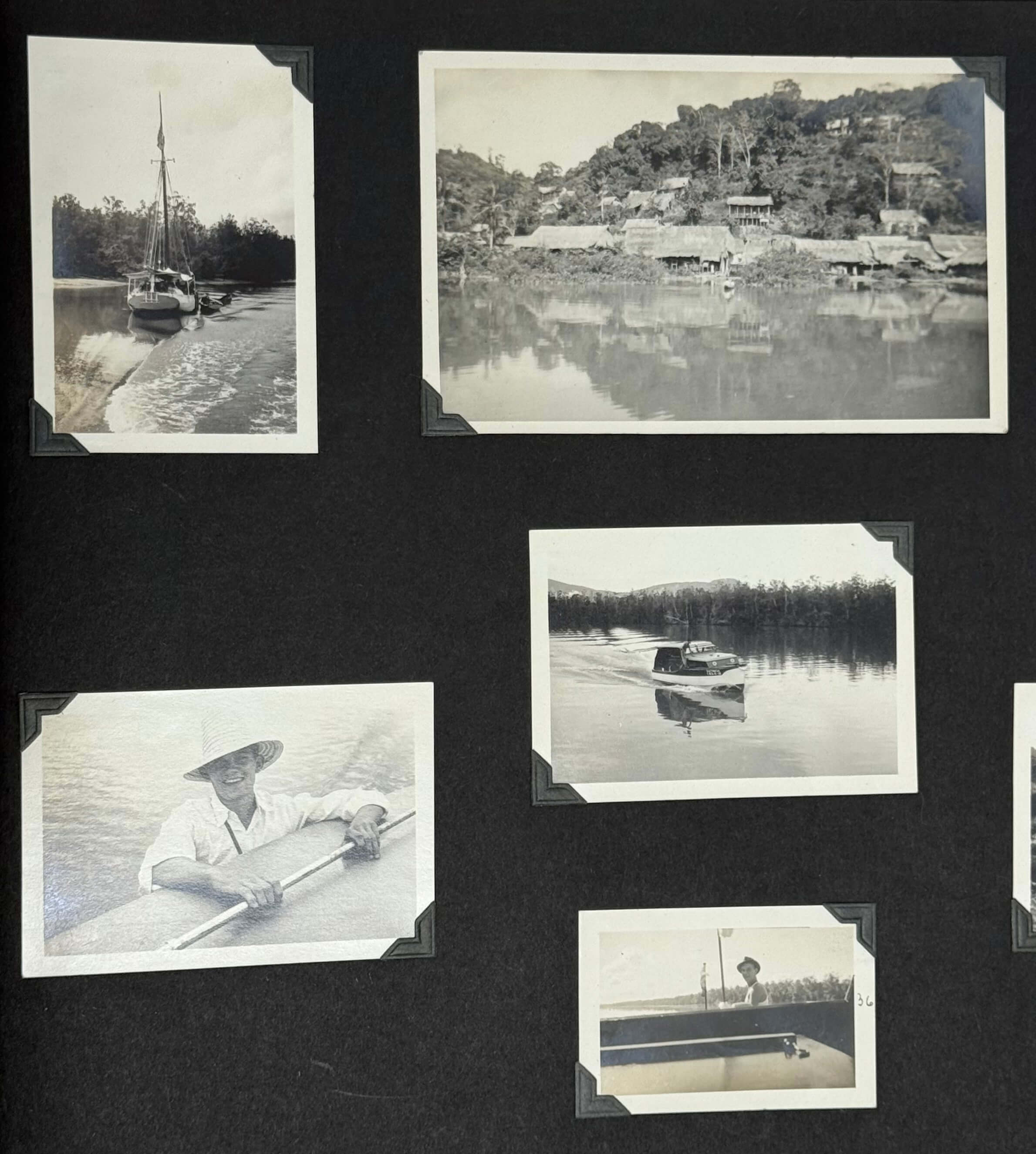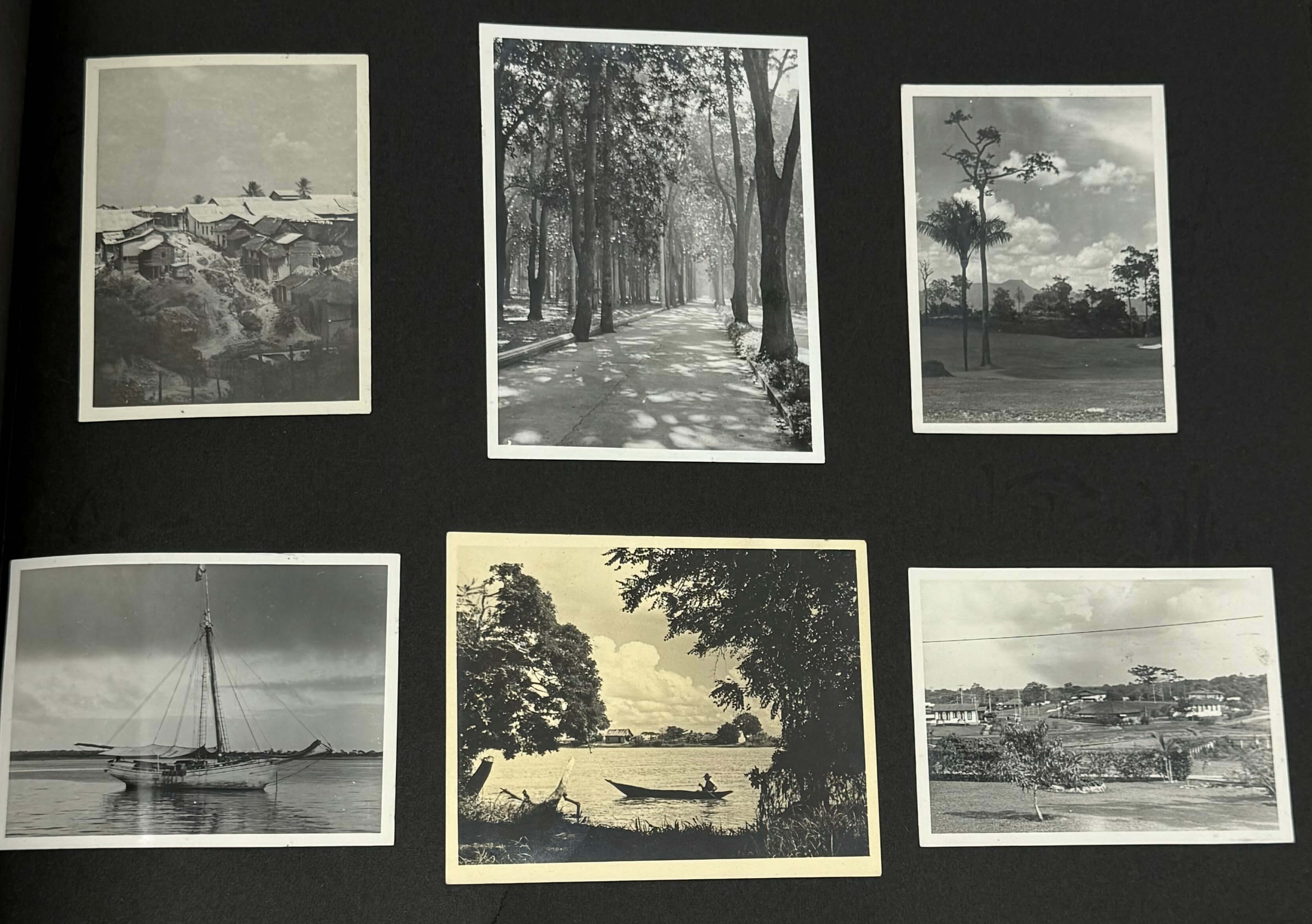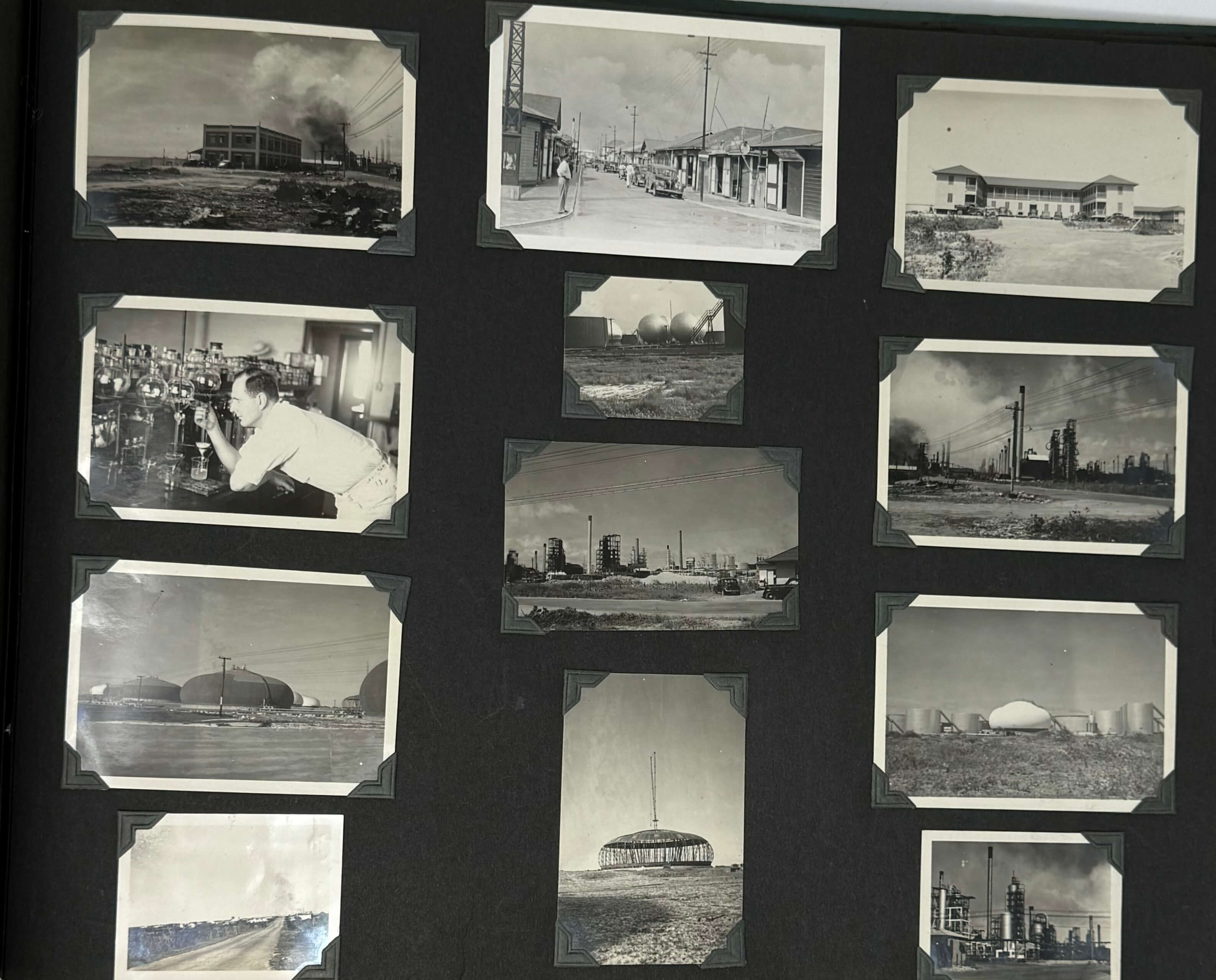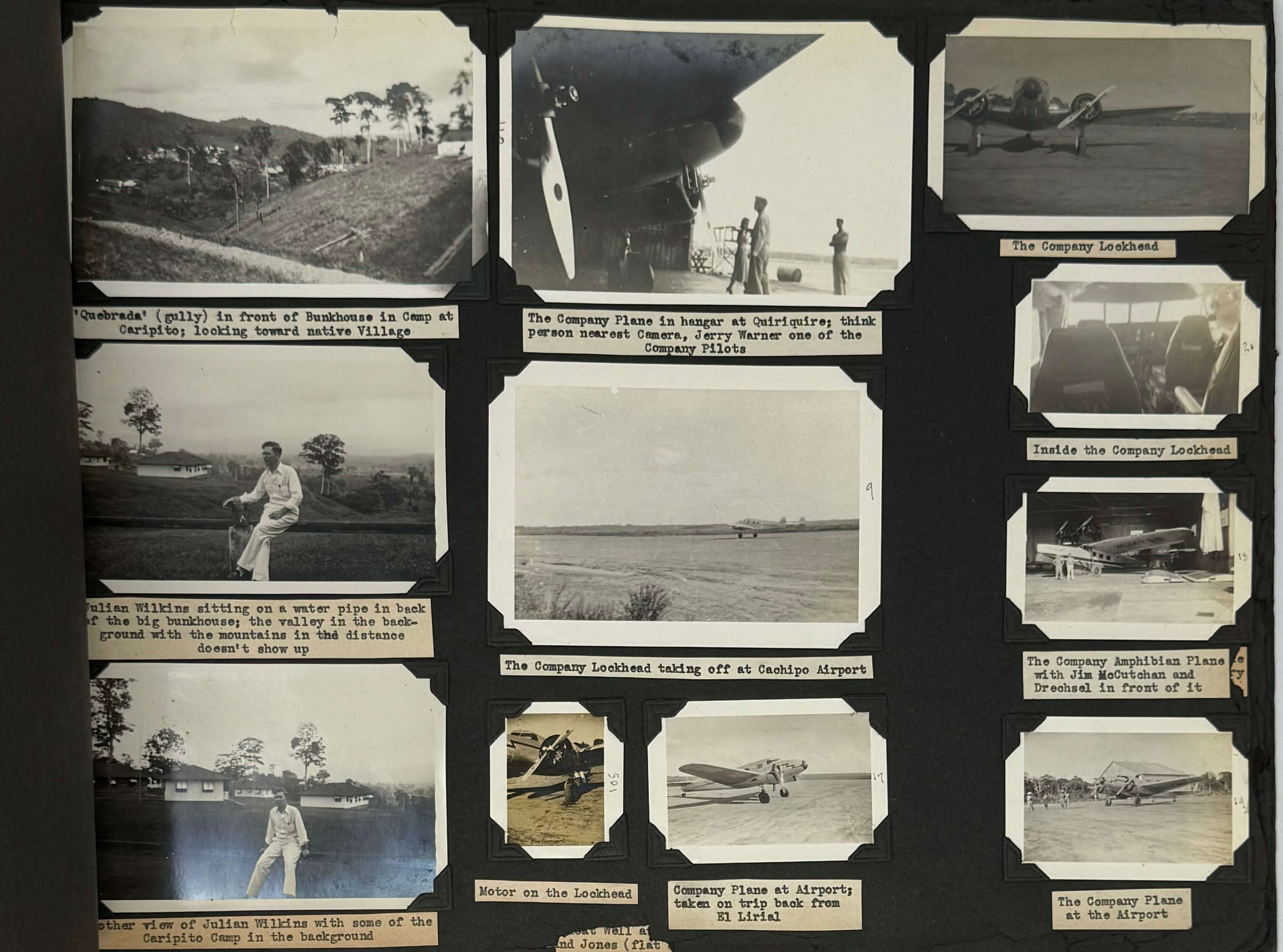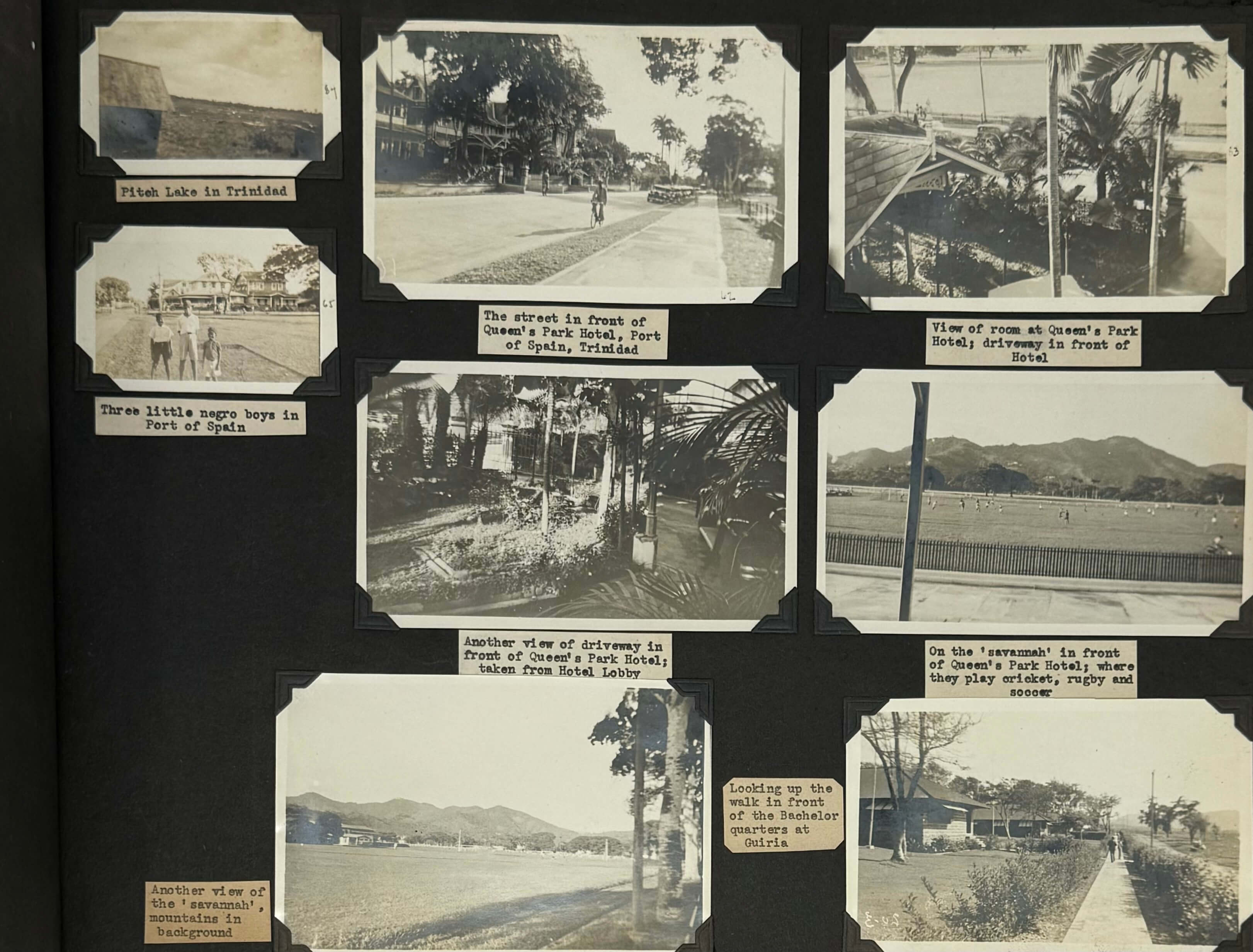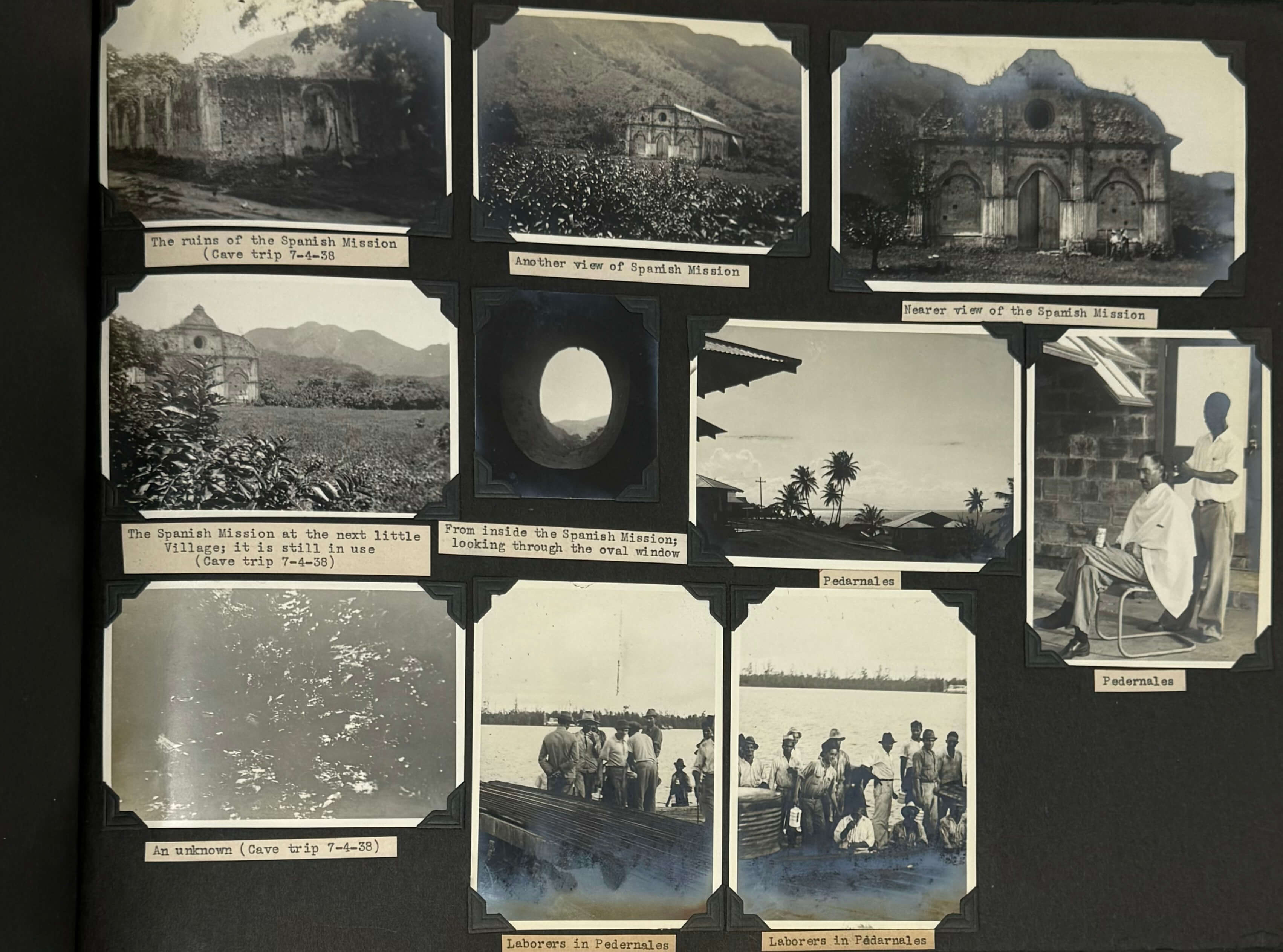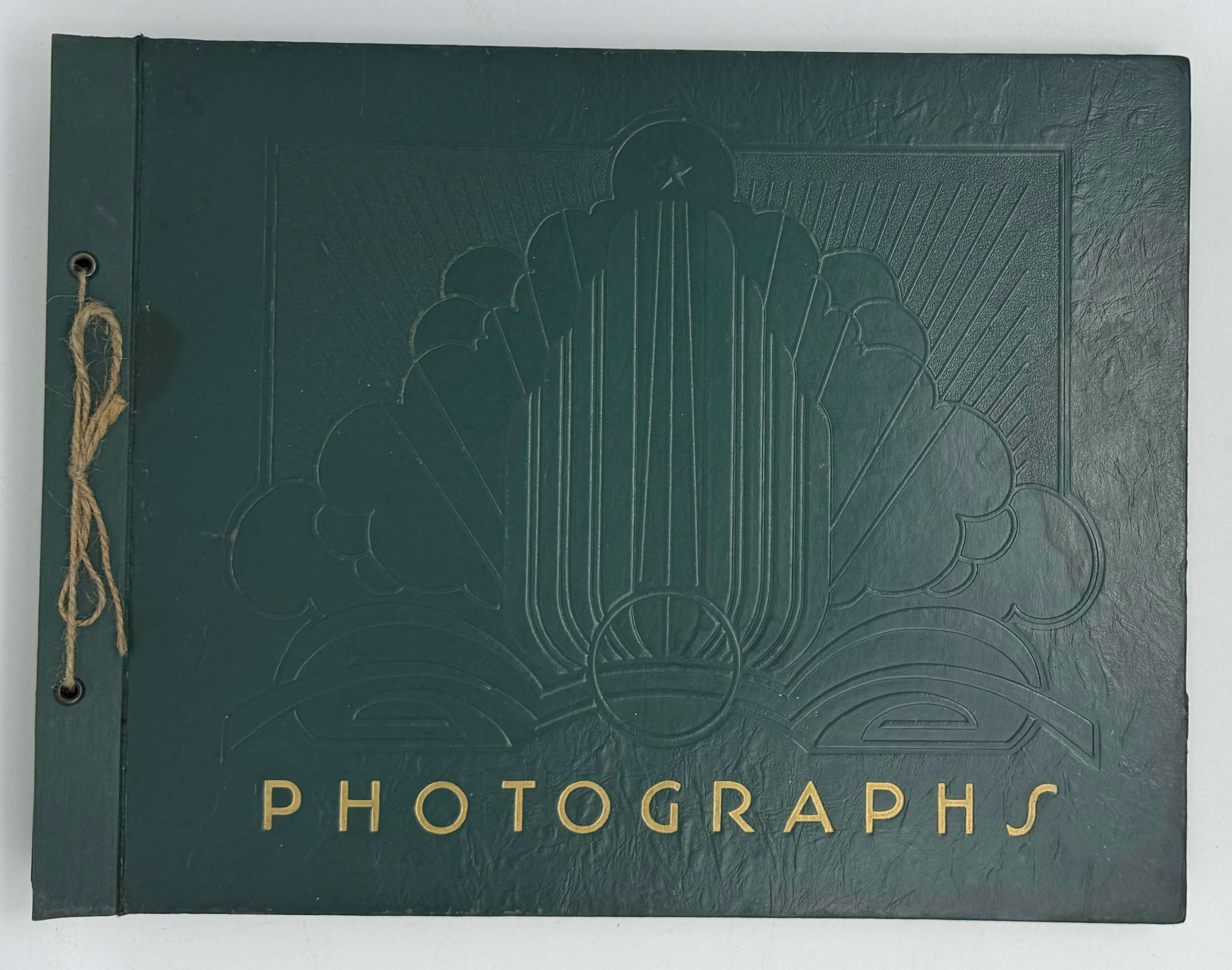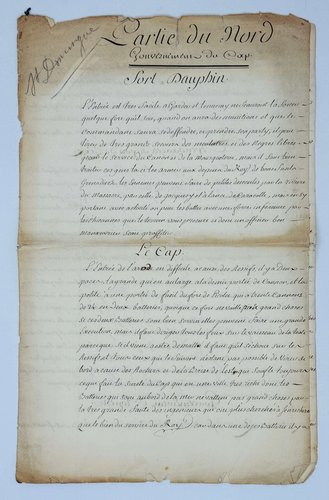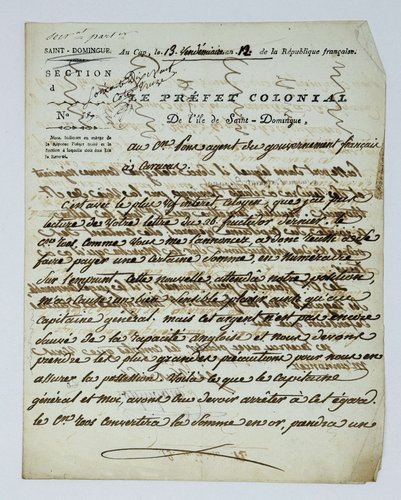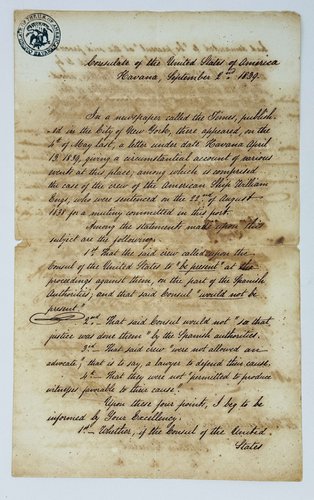
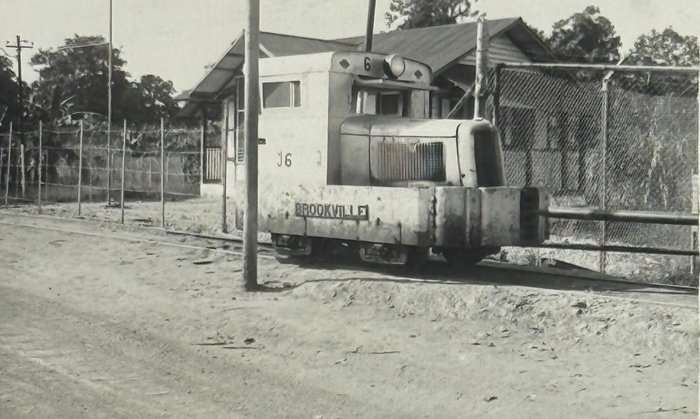
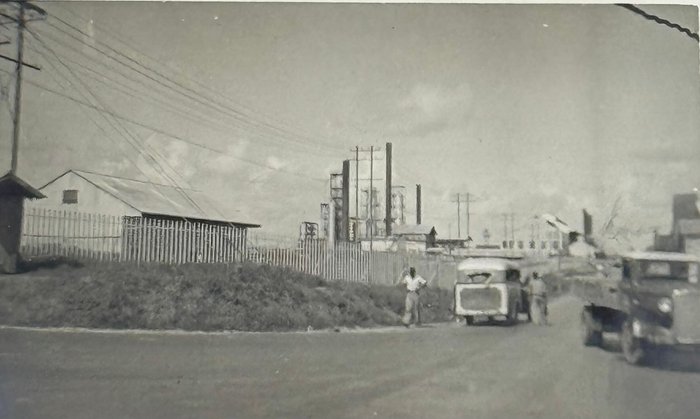
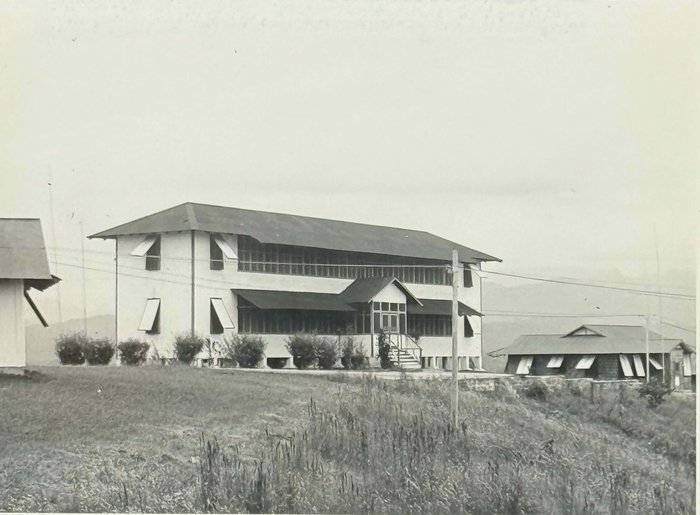
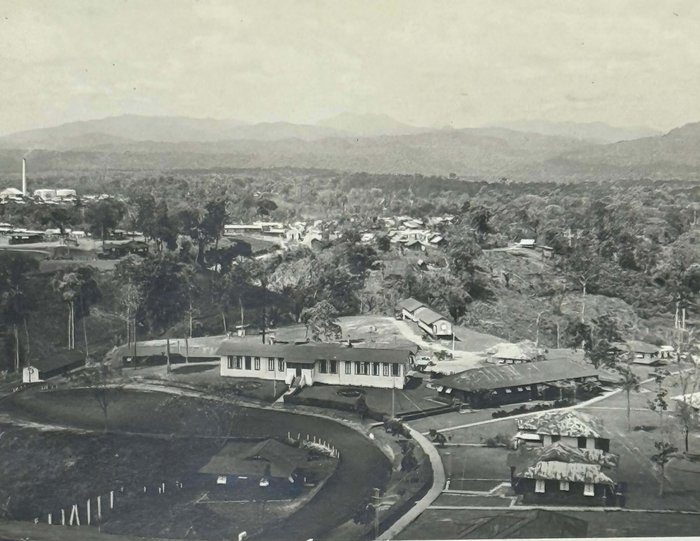
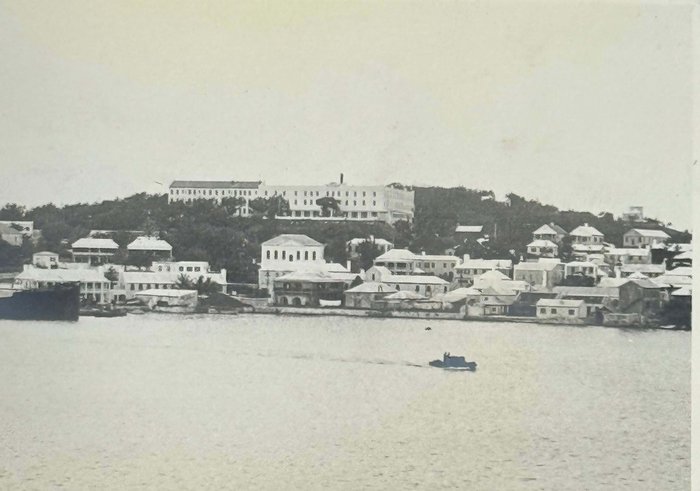
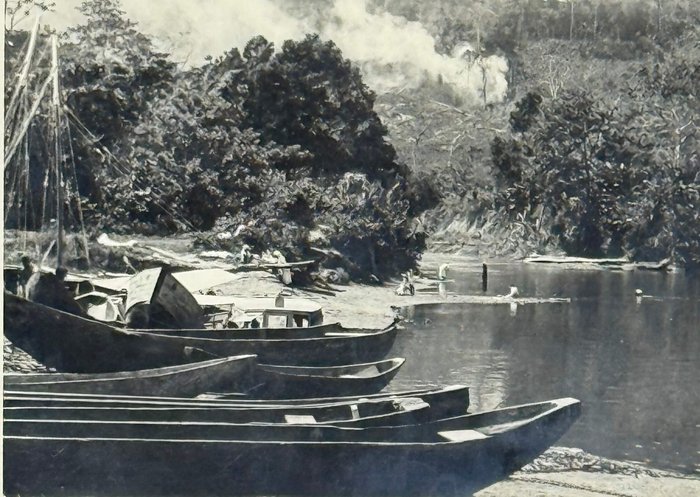
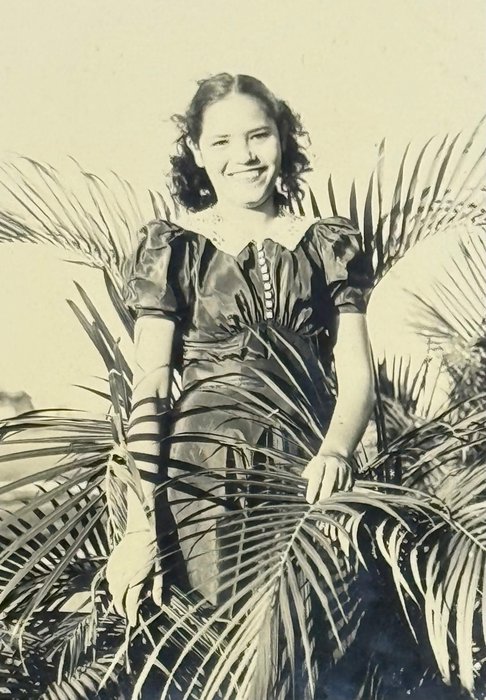
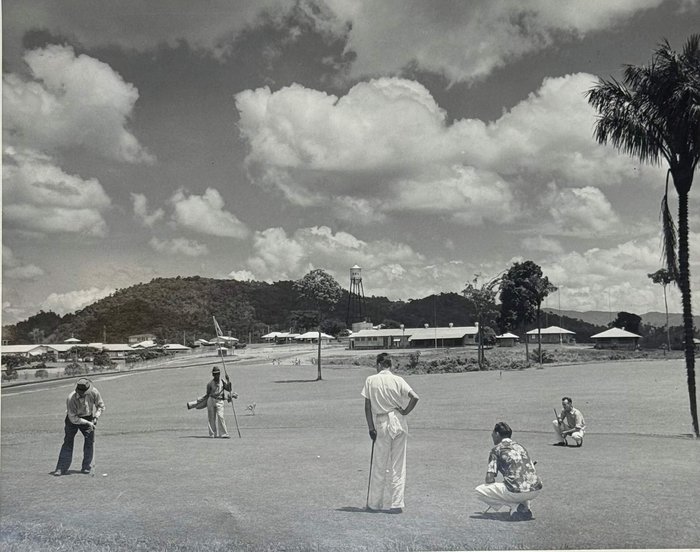
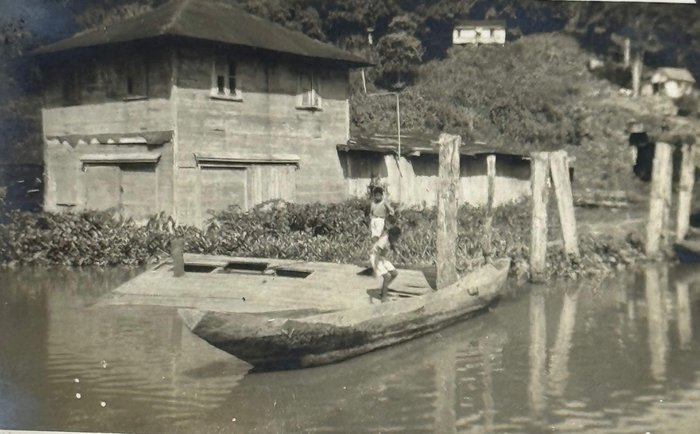
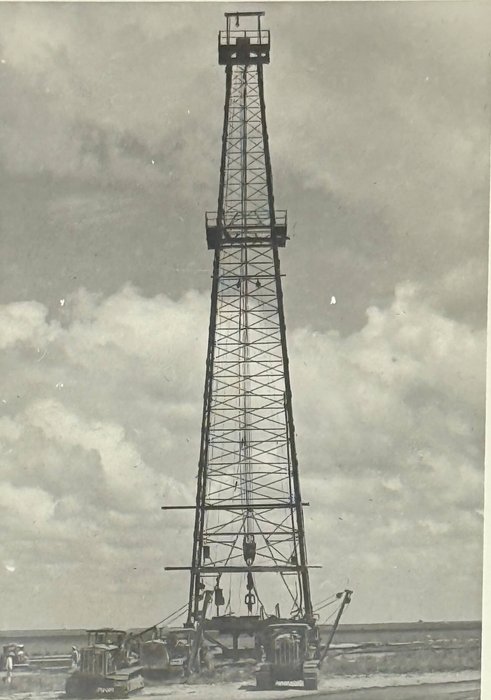

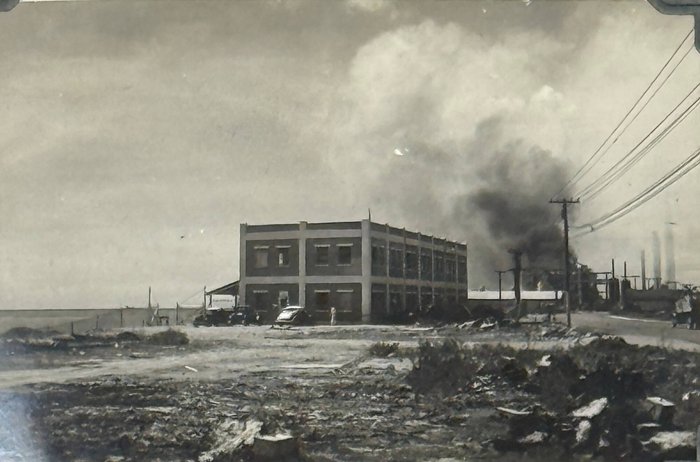

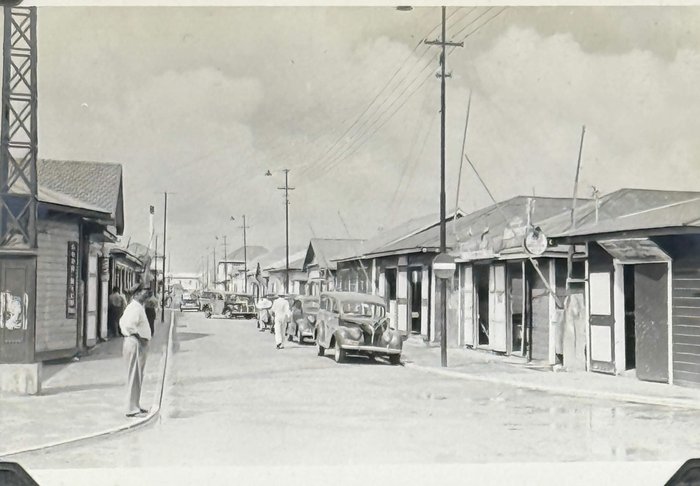
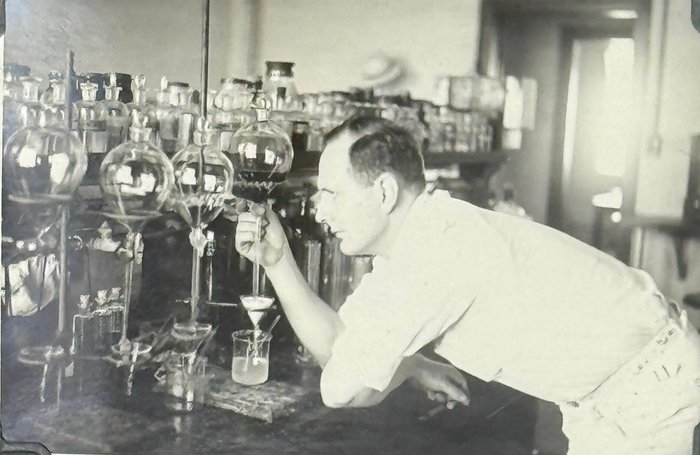
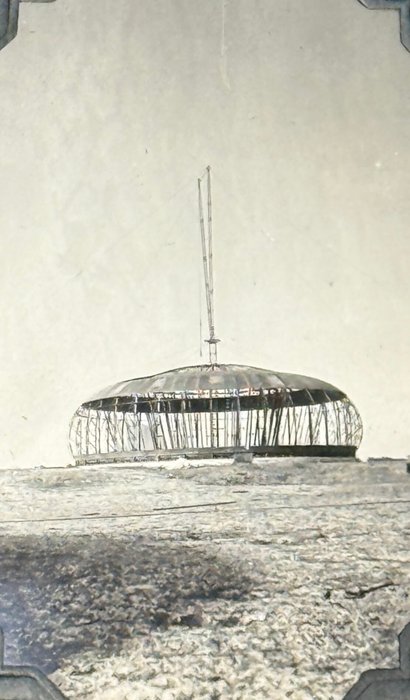

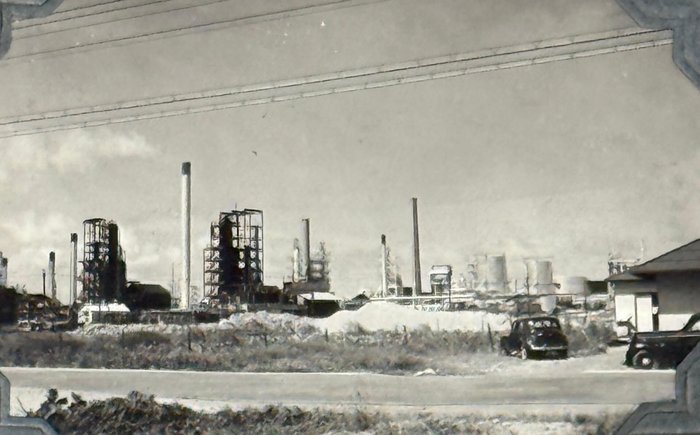
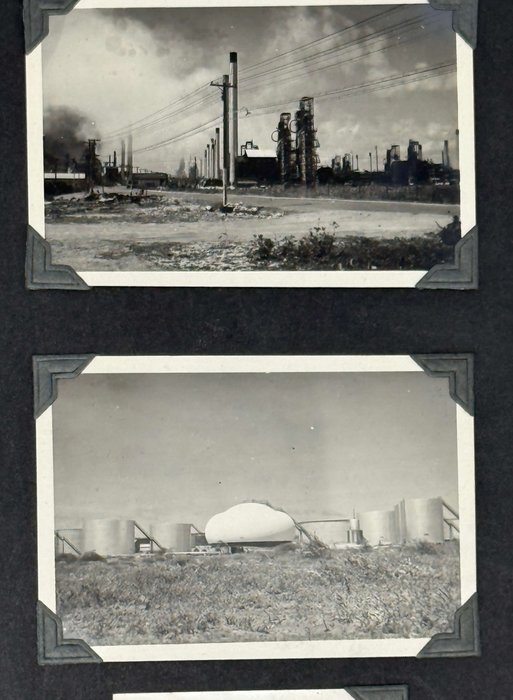
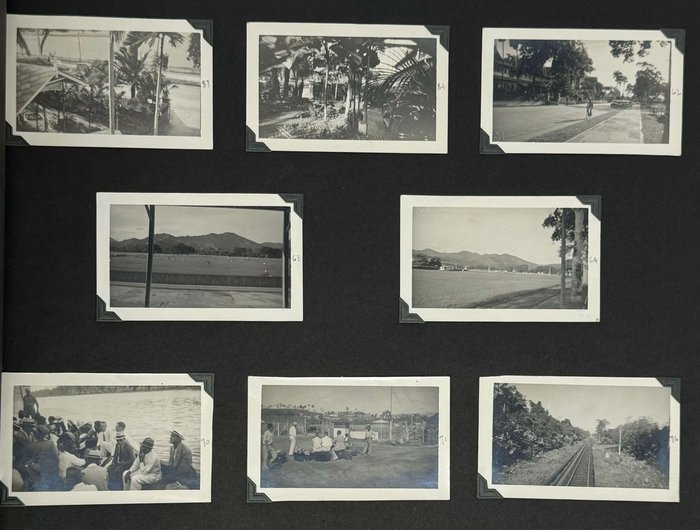
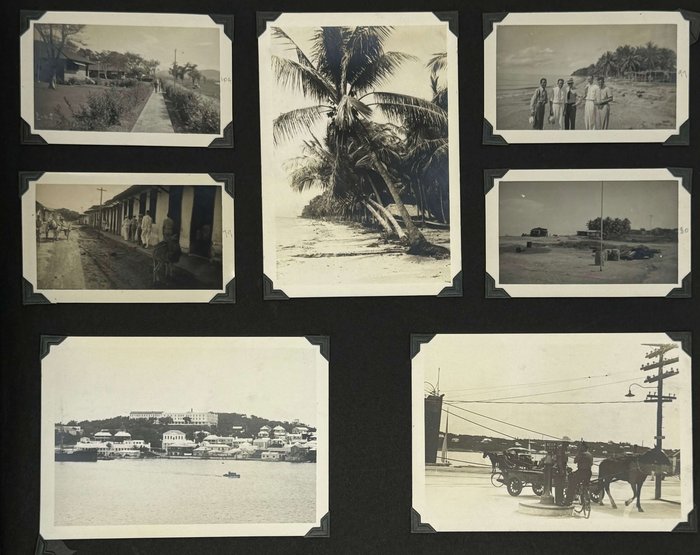
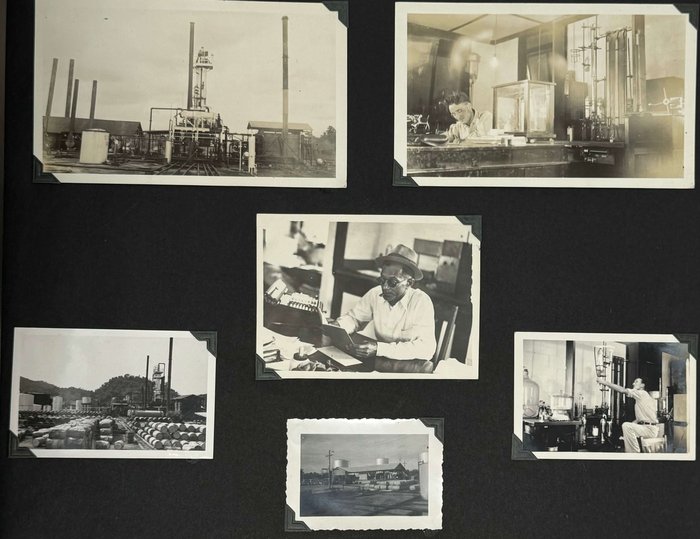

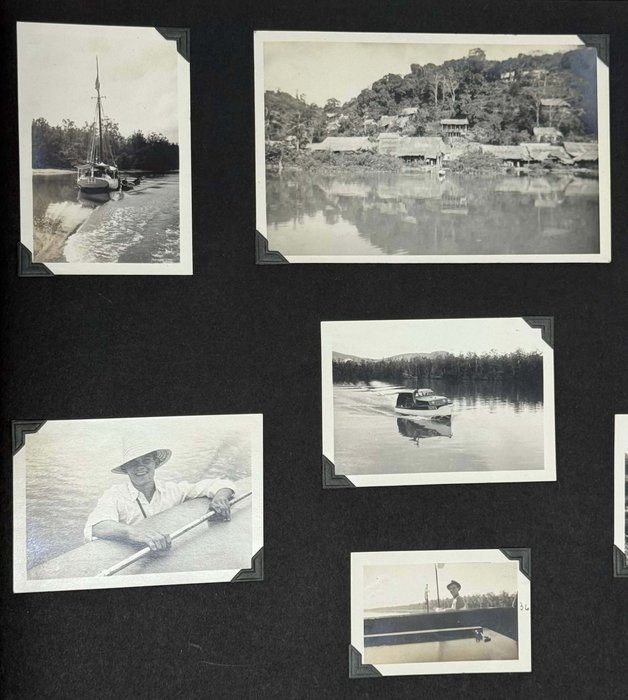

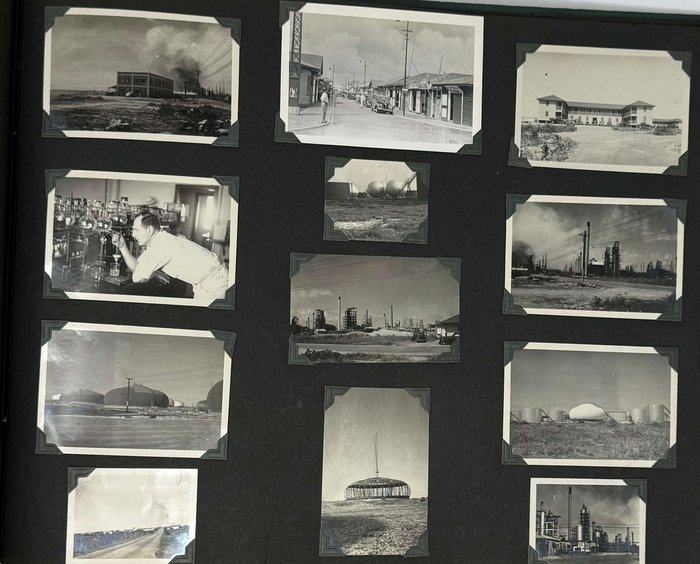
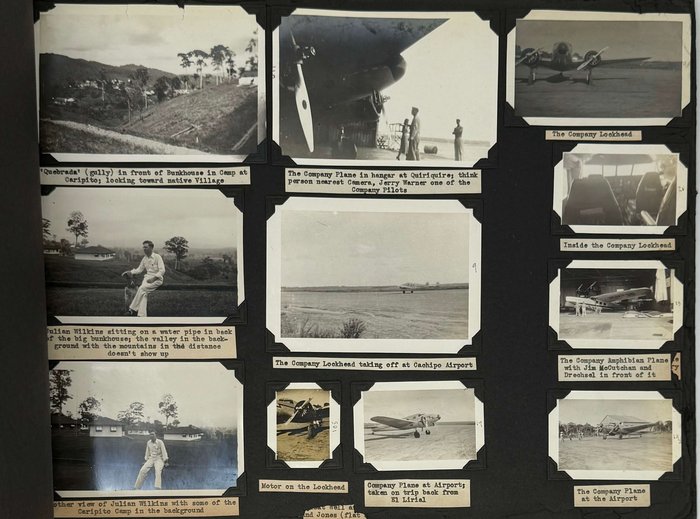
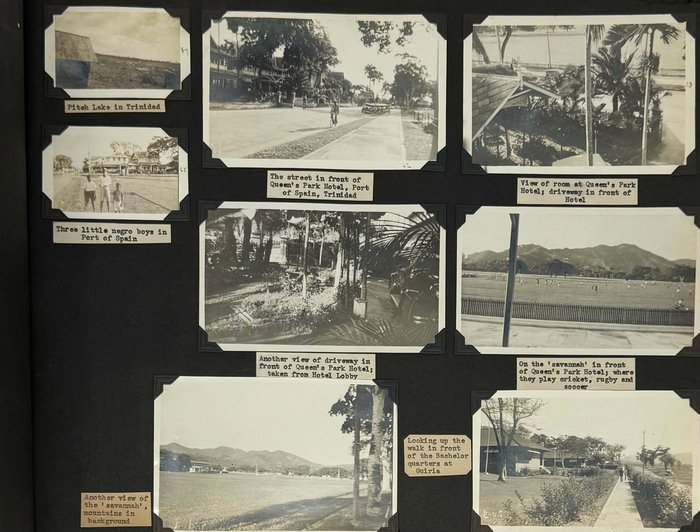
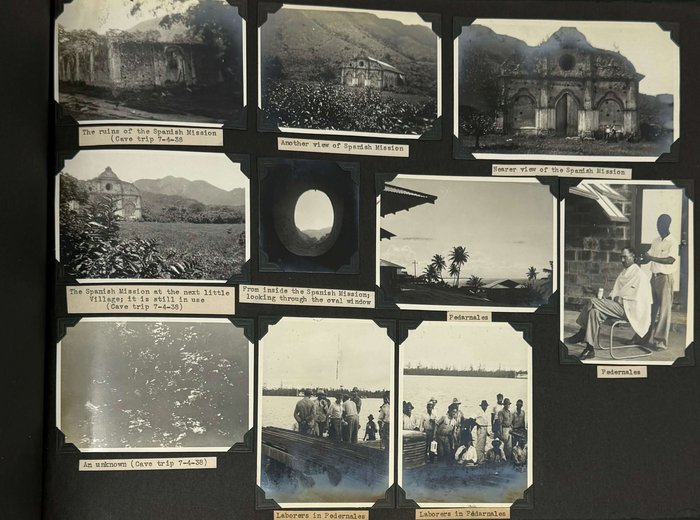
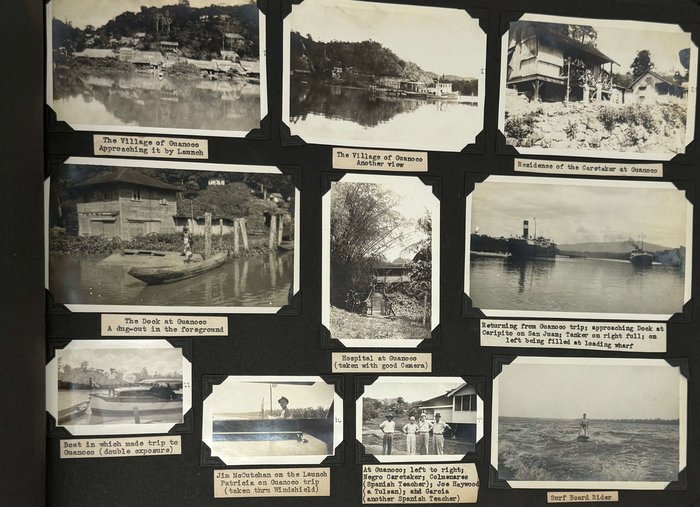
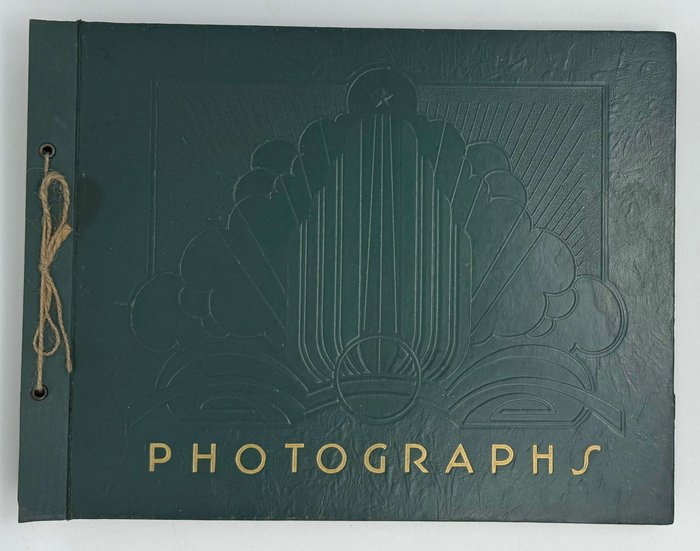
#PD54
Ca. 1938 – early 1940s
Two Oblong Folio albums (each ca. 29x38,5 cm or 11 ½ x 15 ¼ in).
Album 1. 22 thick paper leaves. With ca. 210 mounted original gelatin photos, including 134 large images from ca. 8x12 cm (3 x 4 ¾ in) to ca. 6x9,5 cm (2 ¼ x 3 ¾ in), and 76 smaller images ca. 4,5x7 cm (1 ¾ x 2 ¾ in) or slightly smaller. All but a few photos with period typewritten captions on the paper labels, mounted under the images. Period green full cloth binding fastened with a string; decorative blind-stamped ornaments and a generic title “Photo album” on the front board. Mounts with minor tears and chipping on extremities not affecting the photos; a few photos very mildly faded or with mild silvering, but overall a very good album or strong interesting photos.
Album 2. 52 thick paper leaves. With ca. 340 mounted original gelatin photos, including four large images ca. 20x25 cm (7 ¾ x 10 in) or slightly smaller; the rest of the photos are from ca. 9,5x13,5 cm (3 ¾ x 5 ½ in) to ca. 4,5x6 cm (1 ¾ x 2 ¼ in). Several photos at the rear with typewritten captions on paper labels, mounted on versos; fifteen studio photos at the rear are captioned in negative. Period green full cloth binding fastened with a string; decorative blind-stamped vignette and a generic gilt-lettered title “Photographs” on the front board. Several mounts with minor tears and chipping on extremities not affecting the photos, a few photos very mildly faded or with mild silvering, but overall a very good album or strong interesting photos.
Historically significant, extensive collection of original gelatin silver photos, taken and collected by a young American chemistry engineer, James Arrington, during his work on the “Standard Oil Co.’s” facilities in Caripito and Quiriquire oil field in the Eastern (Orinoco) Basin of Venezuela in ca. 1938-1941. The Quiriquire oil field near Maturin (Monagas state of Venezuela) was discovered in 1928. Already in 1929, the “Standard Oil Co.” began the construction of its facilities in Caripito and a deep-water pier on the San Juan River to allow access to its oil tankers. In 1931, the company opened its refinery in Caripito, followed by an airport in 1935. The facilities were operated under “Standard Oil’s” subsidiary, “Creole Petroleum Corporation,” until the Venezuelan government nationalized them in 1976. The photos provide a detailed picture of the “Standard Oil Co.’s” operations in eastern Venezuela and the life of its employees in the company’s compounds during the years leading to WW2 and the first years of the war.
The first album (with annotated photos) opens with over thirty images, taken on the way from New York to the Venezuelan city of Guiria on the Gulf of Paria, where the travellers went through customs. The photos include scenes on board the U.S. tanker “Geo. H. Jones” (launched in 1919, sunk by a German torpedo in 1942) and views of Trinidad (port, oil refineries, Port of Spain Queen’s Park Hotel, &c.). There are also several views of Guiria (“bachelor quarters,” city street, beach and the travellers) and lively scenes of the travellers getting to Caripito on the “Caripiteno” steamboat and a specially built railway (“getting off the Caripiteno,” “the little railroad from the San Juan River to the Camp at Caripito,” the “Speeder” train and “Ford V-S [engine] that pulls Speeder to and from wharf”).
Over forty photos show the village of Caripito (San Juan River and the dock with oil tankers, Caripe River, Caripiteno steamboat, “Main Street of Caripito,” “road between Caripito and Quiriquire,” a street after a fire, “native cemetery”), “Standard Oil Co’s” refinery and town for its employees (“pipe yard, terminal, warehouse,” “electric light plant,” “Quebrada (gully) in front of bunkhouse,” “general view of operating properties,” golf course, swimming pool, “Mess Hall”, interior of living quarters, &c.), Cachiro Airport with the company’s planes, &c.
A series of views from a trip to the site of oil wells at El Lirial include views of the town of Maturin south of Caripito (cemetery, hospital, “Jim McCutchan at Oil Well Maturin No. 3,” “a little girl going to church in Maturin,” “the road south of Maturin,” and others) and an interesting view of “remains of Wildcat Well at El Lirial.” They are followed by the images of the town of Pedernales (“Caripiteno at anchor off Pedernales,” the company’s camp and clubhouse, “laborers”) and Guanoco village (views from the river, the dock, “residence of the caretaker,” hospital). Over twenty images illustrate a trip to the “cave” (Guacharo Cave National Park, Monagas) in July 1938; the images show local villages, ruins of a “Spanish Mission” (most likely, in Caripe), “the missionaries’ house where stayed all night,” the interior of the cave, mountains, streams and waterfalls, coffee groves, &c.
Several photos portray James Arrington – in the lab in Caripito, in front of the mess hall, the lab (“railroad, pump station and Monte in background”), in front of the Quiriquire club; “looking toward the Caripito village,” inside his room at the bachelors’ quarters, &c. There are also numerous portraits of Arrington’s colleagues – “Julian Wilkins,” “Jim McCutchan,” “Pedro Felice,” “Drechsel,” “Bill Holmes,” “Hiram Clegg,” “Miss Blount, the school teacher,” and others – getting haircuts, swimming in the camp pool, playing tennis, posing on the camp grounds, “on trip to El Lirial,” &c.
The photos in the second album repeat most photos from the first album, and are organized in the same order (which helps identify the uncaptioned images). The album also contains over a hundred additional photos showing the “Standard Oil Co’s” refinery, facilities and town in Caripito (the interior of the lab, industrial structures, general views of the “camp,” &c.), Caripito village (San Juan River, private boats, houses), Maturin (Bolivar Plaza), El Lirial, Pedernales, portraits of “Standard Oil’s” employees (hunting, fishing, swimming, playing tennis, drinking beer in local establishments, &c.), their family members, Venezuelan girls, scenes of public celebrations, a series of views of waterfalls, &c. About a dozen images show the “Standard Oil Co.’s” refinery and facilities in Lago, Aruba.
Six photos at the rear are portraits of Arrington’s fiancee and fellow graduate of the engineering school of Tulsa University, Ruth Ramsay (1918-2012). Over a dozen photos show Tulsa University grounds and the 1937 graduates—the same year as Arrington—with several people identified in captions (Sam Shakely, Louis Birmingham, Guy Rumbaugh, John Finlayson, Charles Roland, Dayton Lawson). Additionally, there are fifteen studio photos of the interior of the Carlsbad Cavern in New Mexico.
Overall an important, extensive collection of original photos illustrating the history of operations of the “Standard Oil Co.” in eastern Venezuela shortly before and during WW2.
James Rogers Arrington, a resident of Tulsa (Oklahoma), graduated from the University of Tulsa in 1937 with a degree of bachelor of science in chemical engineering (Tulsa U. Degrees to 110 Students// Tulsa World. May 16, 1937, p. 3). In May 1938, he was employed by the Tulsa “Carter Oil Company” (a subsidiary of the Standard Oil Co.) to work for three years in Caripito, eastern Venezuela (To South America// Tulsa World. May 15, 1938, p. 13). In November 1941, Arrington was drafted by the “Local Draft Board No. 3” in Tulsa; the draft card notes he was employed by the “Standard Oil Co” (U.S., World War II Draft Cards Young Men, 1940-1947; Ancestry.com). In 1942, he married his “college romance,” Ruth Evelyn Ramsay– both were “graduates of the engineering school of Tulsa University <…> For the past three years [Miss Ramsay] has been on the faculty of the University of Tulsa as an instructor in the chemistry department. Mr. Arrinton was a member of the Engineers’ Club at the University, and following his graduation he spent more than four years in Caripito, Venezuela, where he was employed by the Standard Oil of Venezuela” (Engagement announced// The Tulsa Tribune. June 5, 1942, p. 8).

